
INTERNATIONAL CEREALS’ INDUSTRY EXHIBITION




INTERNATIONAL CEREALS’ INDUSTRY EXHIBITION




Organiser:


Nairobi-based cake-making chain designs people’s dreams in form of cake


Home to Africa’s most substantial arable land, Nigeria is a country full of unexploited agricultural potential




Flour standardisation is a necessity around the world, and is making great strides. A big part of that is the Flourists, a team of committed specialists who dive deep into the world of flour every day. They deliver consistently high flour quality, regardless of wheat variety, climate, soil conditions or storage. With analytical precision and a thorough understanding of the applications, in the wheat and flour analysis lab they collect and evaluate data. In applications labs they use this information to develop fact-based blueprints for new enzyme systems that are a perfect fit. The result: Milestones in flour standardisation, and satisfied customers the world over.
#theflourists muehlenchemie.com
CONTENTS
Editorial
News Update:
• National Foods embraces contract farming to boost food production in Zimbabwe
• Crown Flour Mills launches baking academy to empower Nigerian women
• Innscor Africa’s contract farming scheme contributes 22% of Zimbabwe’s wheat volumes
• BASF to cease hybrid wheat seed development in North America
• Kenya commissions grain storage facilities in Nakuru county to curb post-harvest losses
• Sudan’s largest commodity trader DAL Group secures US$50M for wheat imports
• USDA forecasts wheat production in Ethiopia to jump 27% to reach 7MT in 2022/23
• Sabic Agri-nutrients acquires 49% stake in EIHL for US$320 million
38 44 52
8 10 60
TECHNOLOGY FOCUS - FLOUR BLEND OPTIMIZATION

MARKET UPDATE - SORGHUM
The idea of sorghum displacing maize as Africa’s number one crop may seem like a pipe dream now, but climate change and popularity indigenous foods point to a future where such a reality is possible
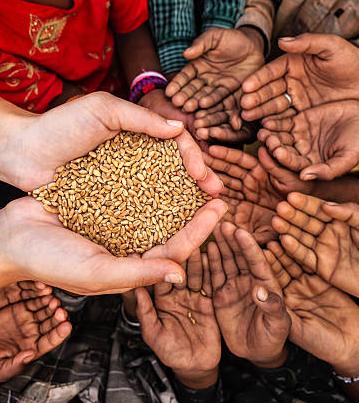

From Africa to the Middle East, countries lay strategies to boost local production in the wake of a global food security crisis
Supplier
• BoMill launches ‘BoMill InSight’ to help millers optimize grain sorting operations
• Bühler introduces wider TUBO push conveyor to help millers achieve higher throughput
• Mathews Company launches new grain handling products designed to withstand demanding operating conditions
• Mühlenchemie rebrands as MC to mark 100 years of flour improvement excellence
38 44 52




MIDDLE EAST & AFRICA

Year 1 | Issue 3 | No.3 | March/April 2023
FOUNDER & PUBLISHER
Francis Juma
SENIOR EDITOR
Paul Ongeto
EDITORS
Abel Ndeda | Martha Kuria | Wangari Kamau
BUSINESS DEVELOPMENT DIRECTOR
Virginia Nyoro
BUSINESS DEVELOPMENT ASSOCIATE
Hellen Mucheru
HEAD OF DESIGN
Clare Ngode
VIDEO & DESIGN ASSISTANT
Newton Lemein
ACCOUNTS
Jonah Sambai
Published By: FW Africa
P.O. Box 1874-00621, Nairobi Kenya
Tel: +254725 343932
Email: info@fwafrica.net
Company Website: www.fwafrica.net


The United Arab Emirates (UAE) is on a food security drive that seeks to achieve 100% import substitution of certain food products. Knowing fully well its location in a desert does not favor agriculture, UAE is not waiting for rain. The country is instead investing millions of dollars in desalinating water and pumping it to its rapidly expanding agricultural farms to boost output.
Milling Middle East & Africa is published 6 times a year by FW Africa. Reproduction of the whole or any part of the contents without written permission from the editor is prohibited. All information is published in good faith. While care is taken to prevent inaccuracies, the publishers accept no liability for any errors or omissions or for the consequences of any action taken on the basis of information published.
From temperature-controlled greenhouses to AI-powered open fields, UAE is stopping at nothing in the push to achieve food security. In the open fields where most waterintensive crops such as wheat are being grown, UAE is deploying precision technology to ensure maximum yields are achieved. State-of-the-art technology, which includes soil sensors as well as satellites that perform thermal imaging of the site, is at play here to ensure plants receive water only when they need it and at the right amount to avoid wastage of the scarce commodity. A model farm in Sharjah is already showing potential having already yielded 1,700 tonnes of wheat from just 400 hectares of land. The plan is to expand this to 1900 hectares by 2025. Research is also actively going on to identify wheat varieties that are best suited for the region.
If UAE can achieve food security with its limited water resources, what about Africa and its vast arable lands, we could produce more and even feed the rest of the world. It’s unfortunate that we depend on Ukraine for most of our grain despite the country being sixty times smaller than the African continent. UAE however shows that by putting food security as a top priority and actively investing in modern agricultural farming
methods, achieving the goal of selfsufficiency in many of our staples could happen sooner than we could imagine.
It’s inspiring to see some countries from Ghana in the West to Kenya in the East are starting to put some serious effort towards achieving self-sufficiency in some of their most important staples. It’s a positive step toward food security, however, more can be done to ensure we have an abundance of food all year round.
As Milling Middle East and Africa Magazine, we will certainly continue playing our part in highlighting the key trends happening in the Milling and Baking sector and best practices that can be borrowed by players in the region to ensure our food security ambitions are within reach.
We wish you a delightful read.
Paul Ongeto Senior Editor FW Africa







COTE D’IVOIRE – The government of Cote d’Ivoire plans to release US$ 3.2 million in support of the bakery sector, Aimé Koizan, Director General of Internal Trade, ha revealed.

Koizan who was speaking during a national SME workshop in the country’s capital Yamoussoukro noted that funds will be used for subsidies and the structural transformation of the wheat flour-bread sector.
Bread is one of the most consumed
foodstuffs produced by nearly 2,000 bakeries in the country, but various challenges have undermined the industry’s performance.
Koizan noted the initiative is part of the implementation measures aimed at addressing the various issues that are slowing development in the sector.
The country also plans to strengthen the quality of training for bakers, limit taxation as well as stabilization of bread prices.
MALAWI – Mount Meru Millers, one of the largest edible oil manufacturing companies in Malawi, has been ordered by authorities in Malawi to stop operations until it rectifies its non-compliance with environmental regulations.
Mount Meru Millers is a major player in edible oil manufacturing that deals in Sunflower, Soya, Palm, Cotton, and Groundnut seeds.
According to Malawi Nyasa Times,
the decision by the Malawi Environment Protection Authority (MEPA) was in a wake of an inspection that the National Water Resource Authority (NWRA)

conducted at the facility to establish the alleged discharge claims.
According to Michael Makonombera, MEPA’s Deputy Director General, the miller had earlier been issued with an order including a fine of 5 million kwacha (US$250,000) on 23rd January.
“In addition to the K5 million fine, the company will be charged K100,000 (US$5,000) daily effective today until all issues are resolved. This is because they did not comply with the first order,” Makonombera stated.
in Zimbabwe, has doubled down on contract farming in push to support Zimbabwe’s drive to substitute imports with local produce.
During the 2022 annual report, the company’s chairman Mr. Todd Moyo hinted that the company was continuing to support contract farming for strategic crops such as maize, soya beans, and sorghum.

hectares of maize and soya beans this summer season.
In addition, the group produced around 12 000 hectares of winter wheat, representing a significant portion of the contracted crop.
ZIMBABWE – National foods Holdings, a leading agri-industrial company
He revealed that the company supported the production of 40 000
The development comes at a time when the government is calling on companies to source 40 percent of their raw materials locally in a move towards attaining self-sufficiency as well as supporting the country’s primary production sector.
to hit 959.4 million pounds (US$31.3 million), Agence Ecofin has reported.
The company noted that the impressive performance which exceeded the previous record of 471.9 million pounds (US$15.4 million) was attributed to a 46.1% year-on-year growth in revenue totaling 7.7 billion pounds (US$250.8 million).
products in several countries in the North Africa and Middle East (MENA) region, including Algeria, Tunisia, Libya, and Qatar
EGYPT – Edita Food Industries (EFI), Egyptian snacks giant, has more than doubled its net profit for the fiscal year 2022 which ended on December 31 last,
NIGERIA – Crown Flour Mills, a subsidiary of Singapore-based commodity trading giant Olam Agri, has, through the Crown Flour Angels (CFA) initiative launched a baking academy to train and economically empower women in Nigeria.
The CFA Baking Academy – located in Kano, the capital of Kano State in northern Nigeria – specifically targets women, empowering them with commercial baking skills to enhance their earnings, helping their families, their communities and the country's economy.
“The launch of the Baking Academy offers a scaled support framework for women across regions, and the choice of Kano is strategic,” said Bola Adeniji, head of marketing, Olam Agri in Nigeria.
“The bakery market is growing significantly and presents an opportunity for bakers, including graduates from our baking academy. We’re proud to be launching our women into this prosperous market through our initiative.”
Edita Foods was founded in 1996 and is the leader in the Egyptian packaged snack market with a portfolio of brands that includes Molto, TODO, MiMix, Bake Rolls, Bake Sticks, and Hostess Cakes.

The company distributes its
According to the company, the celebrated performance is mainly supported by the ongoing launch of the year for its activities in Morocco following the commencement of the cake production business in 2021.
Cakes topped the company’s list of most performing products, accounting for approximately 48% of sales (US$120.5 million), followed by bakery products (32%) and waffles (9.6%).
EAST AFRICA – East African finger millet breeding has received a boost from the Biodiversity for Opportunities, Livelihood, And Development (BOLD) aimed at developing new stress-tolerant finger millet varieties, IPP Media reports.
Entitled, ‘Harnessing crop diversity to mitigate the effects of our changing climate – Finger millet component, the three-year project aims at mainstreaming finger millet into the cropping system in East Africa.
BOLD is a new 10-year project funded with USD 58 million by the Government of Norway. The initiative aims at addressing the impacts of climate change on food and nutrition security by supporting the conservation and use of crop diversity.
Led by the Crop Trust, BOLD builds on the Crop Wild Relatives (CWR) Project (2011–2021), which conserved and used the wild relatives of crops to help futureproof the world’s food supply.
According to FAO, finger millet (Eleusine Coracana) is a major crop grown and adapted to the semi-arid region of East Africa providing food, feed, and income to the population. However, the huge potential of the crop for local consumption, export, and research investment has been minimal.
The project is envisioned to focus on developing new finger millet varieties that have greater tolerance to stresses caused by climate change and are more resistant to biotic stresses like Striga weed and blast disease. BOLD anticipates that overall, the project will improve the livelihood and nutrition security of smallholder farmers in Africa and worldwide
Launched in December last year, the project will be carried out by agricultural research organizations in Uganda, Kenya, South Sudan, and Tanzania, led by the Tanzania Agricultural Research Institute (TARI), Uyole Center in MbeyaTanzania.
Co-located with:
www.afmass.com
JUNE 15-17, 2023 | Sarit Expo Centre, Nairobi, Kenya

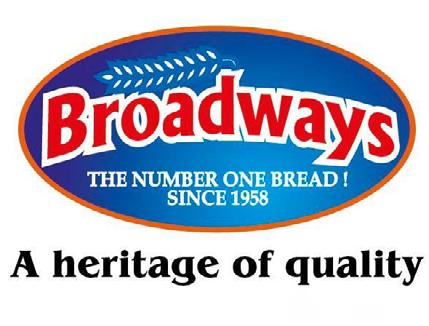


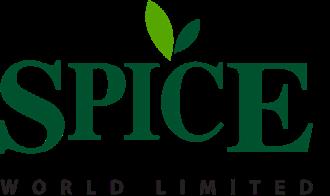

Sign up today to Sponsor, Exhibit, Speak or Attend AFMASS Food Expo

Hosted at the Sarit Expo Centre in Nairobi, Kenya on June 15-17, 2023, AFMASS Food Expo has over the last 7 years grown into the most influential trade show for the food, beverage and milling industry in Eastern Africa.

This year, look forward to a larger Expo Hall with more exhibitors, a larger variety of exhibitors from more than 20 countries and more food companies showcasing their latest products
And to cap it all, join us as we debut the AFMASS Baking Championship at the Expo. See you in June!!
CONFIRMED SPONSORS:

• The incredible energy, drive and innovation of some of the young people, entrepreneurs and start-ups in the region will be on full display at AFMASS Food Expo 2023.




• With the addition of a number of competitions into the key activities and attractions at the Expo, the 2023 edition of AFMASS Food Expo is shaping up to be full of fun, excitement and celebrations, as competitors put their innovation and creativity to the test, live in front of the trade show visitors, right within the Expo Hall!!

The FAO Food Price Index averaged 129.8 points in February, a marginal 0.6-percent decrease from January but 18.7 percent down from its peak in March 2022.
The decline in the index, which tracks monthly changes in the international prices of commonly-traded food commodities, reflected drops in quotations for vegetable oils and dairy products that more than offset a steep rise in sugar prices.
The FAO Cereal Price Index remained virtually unchanged from January. International wheat prices rose marginally during the month, as concerns over dry conditions in the United States of America and robust demand for supplies from Australia were largely countered by a strong competition among exporters.
the FAO Dairy Price Index declined 2.7 percent during the month, with butter and skim milk powder international quotations registering the steepest decline.
The FAO Meat Price Index also remained almost unchanged from January. In contrast, the FAO Sugar Price Index rose 6.9 percent from January to its highest level in six years, due largely to a downward revision to the 2022/23 production forecast in India.
GLOBAL - The benchmark index of international food commodity prices declined in February for the eleventh consecutive month, albeit only marginally, the Food and Agriculture Organization of the United Nations (FAO) has reported.

International rice prices eased by 1.0 percent due to a slowdown in trading activities in most major Asian exporters, whose currencies also depreciated against the United States dollar.
The FAO Vegetable Oil Price Index declined 3.2 percent from January, while
ZIMBABWE – Innscor Africa Holdings, Zimbabwe’s iconic manufacturer of consumer staples, has contributed to 22% of the country’s wheat production following a successful contract wheat farming scheme strategy, Julian Schonken, the company CEO has said.

Schonken was speaking at the company’s listing ceremony at the Victoria Falls Stock Exchange where he revealed that the milestone was achieved due to the company’s intensified investment towards self-sufficiency and reduced reliance on imports.
Zimbabwe has been making progress
toward attaining self-sufficiency in wheat through increasing local production in a bid to wean itself from import bills that are becoming unreliable
The county has managed to increase
the area under wheat production from 24,000 hectares (ha) in 2019 to 80,000 ha in 2022.
Schonken reports that Innscor was the main contributor to wheat volumes from the private sector during the winter season.
“Of the 20,000 ha covered by the private sector, Innscor managed 13 000 ha, a whopping 65%,” Schonken said.
He further revealed that the 13,000 ha of wheat contributed 78,000 metric tonnes of the local wheat produced for the season, representing 22% of total local production.
THE FAO FOOD PRICE INDEX AVERAGED 129.8 POINTS IN FEBRUARY, A MARGINAL O.6 PERCENT DECREASE FROM JANUARY BUT 18.7% DOWN FROM ITS PEAK IN MARCH.














































 YEMISI IRANLOYE Founder/CEO, Psaltry International
MICHAEL CHORSKE Operating Partner, Pegasus Capital Advisors / Sustainable African Foods, Mali
JOHN MWENDWA Public Affairs & Communications Director, Coca-Cola Beverages Africa
CHUKWUEMEKA IDAM Sustainability Advocate and CEO, Zen Ideas
DAVID KAMAU Managing Director, Fortified Whole Grain Alliance
NASRA NANDA CEO & ESG Lead, Kenya Green Building Society
NDIDI NWUNELI Executive Chairman, Sahel Consulting & Co-Founder, AACE Foods
DAVE OKECH OKECH Founder & Chief Imagination Officer, Aquarech
MATTHIAS GRABE Managing Director, Buhler East Africa
HARRISON JUMA General Manager, Tunga Nutrition (Unga Group)
TUMISANG MATSHEKA Vice President, Supply Chain, PepsiCo South Africa
STANLEY MWORIA CEO, Aquaculture Association of Kenya
PAUL BARTELS CEO, Mogale Meat
CAROL KOECH Country President, Schneider Electric East Africa
CLAIRE VAN ENK CEO, Farm to Feed
JIT BHATTACHARYA Co-founder & CEO – BasiGo
VINOD GUPTAN CEO, MedSource Group & Vice Chairman, Kenya Association of Pharmaceutical Industry
MICHAEL ORANGI Country Director, Kenya & Tanzania, Rainforest Alliance
WILLIAM KAPFUPI Managing Executive, CCB, National Foods
TALASH HUIJBERS CEO & Founder, Insectipro
WAMBUI MBARIRE CEO, Retail Traders Association of Kenya
JOACHIM WESTERWELD Executive Chairman, Bio Food Products
VAISHALI MALDE Sales & Marketing & Sustainability Manager, PIL
CAESAR ASIYO Chief Development Officer, Victory Farms
YEMISI IRANLOYE Founder/CEO, Psaltry International
MICHAEL CHORSKE Operating Partner, Pegasus Capital Advisors / Sustainable African Foods, Mali
JOHN MWENDWA Public Affairs & Communications Director, Coca-Cola Beverages Africa
CHUKWUEMEKA IDAM Sustainability Advocate and CEO, Zen Ideas
DAVID KAMAU Managing Director, Fortified Whole Grain Alliance
NASRA NANDA CEO & ESG Lead, Kenya Green Building Society
NDIDI NWUNELI Executive Chairman, Sahel Consulting & Co-Founder, AACE Foods
DAVE OKECH OKECH Founder & Chief Imagination Officer, Aquarech
MATTHIAS GRABE Managing Director, Buhler East Africa
HARRISON JUMA General Manager, Tunga Nutrition (Unga Group)
TUMISANG MATSHEKA Vice President, Supply Chain, PepsiCo South Africa
STANLEY MWORIA CEO, Aquaculture Association of Kenya
PAUL BARTELS CEO, Mogale Meat
CAROL KOECH Country President, Schneider Electric East Africa
CLAIRE VAN ENK CEO, Farm to Feed
JIT BHATTACHARYA Co-founder & CEO – BasiGo
VINOD GUPTAN CEO, MedSource Group & Vice Chairman, Kenya Association of Pharmaceutical Industry
MICHAEL ORANGI Country Director, Kenya & Tanzania, Rainforest Alliance
WILLIAM KAPFUPI Managing Executive, CCB, National Foods
TALASH HUIJBERS CEO & Founder, Insectipro
WAMBUI MBARIRE CEO, Retail Traders Association of Kenya
JOACHIM WESTERWELD Executive Chairman, Bio Food Products
VAISHALI MALDE Sales & Marketing & Sustainability Manager, PIL
CAESAR ASIYO Chief Development Officer, Victory Farms

USA – Proposed changes to which foods can be labeled “healthy” by the US Food and Drug Administration (FDA) have received strong opposition from major industry players General Mills, Kellogg, and Post Holdings.
The FDA recommendations propose that the “healthy” claim be reserved for “nutrient-dense foods” that contain a certain percentage of fruit, vegetables, grains, dairy or protein.
The proposals have far-reaching effects, particularly on the cereals category as it would, for instance, limit cereals labeled as “healthy” to those containing no more than 2.5 grams of sugar per serving.
General Mills owns cereal brands including Lucky Charms and Cheerios, while Post owns Instant Oatmeal, Golden Crisp, and Bran Flakes. Kellogg’s stable includes Crunchy Nut and Coco Pops.
The companies said the changes, proposed by the US Food and Drug Administration (FDA), would exclude more than 95% of the “major readyto-eat cereals” from being labelled as healthy.
In defense, the companies claimed ready-to-eat cereal is “an affordable, accessible, convenient, and popular nutrient-dense food that has a long history of helping consumers build healthy dietary patterns”.
UK – The parliament of the United Kingdom has passed Genetic Technology Bill (Precision Breeding) to spur the development of foods with increased nutritional value, maximized flavor and longer shelf life.
Other benefits include improved animal health and welfare, increasing crops’ resilience to extreme weather events such as flooding and drought and helping farmers tackle climate change and aid biodiversity.
Under the law provisions, the streamlined regulatory system will remove plants produced through precision breeding technologies from regulatory requirements applicable to GMOs.
However, there will be a limit in that the law only allows genetic changes that could have been produced either naturally or through seed crossbreeding.
The new law will also only allow the gene-editing of crop foods and not of farm animals, which will require further legislative action in the country to be legalized.
Among the first crops that may appear on English dinner tables are vitamin-D-enriched tomatoes, gluten free wheat, and disease resistant potatoes.
“Early benefits of gene-editing for UK agriculture could include gluten-

free wheat, oilseeds with heart-healthy fats, disease-resistant sugar beet and potatoes that are even healthier than those we have now,” explains Prof Johnathan Napier, researcher of plant sciences at Rothamsted Research.
“Gene-editing can also help accelerate the improvement of orphan crops like cassava, millet, cowpea and yams, which are critical to food security in less developed parts of the world,” he continues.
The law is however not applicable in the entire United Kingdom. According to release from the UK government, commercial use of gene-editing will only be allowed in England and not in Wales, Northern Ireland or Scotland.
THE NEW LAW WILL ONLY ALLOW GENEEDITING OF FOOD CROPS AND NOT FARM ANIMALS WHICH WILL REQUIRE FURTHER LEGISLATIVE ACTION IN THE COUNTRY.
USA – BASF has announced plans to cease its activities in hybrid wheat seed development in North America was met with shock to the disappointment by US and Canadian wheat growers and processors. BASF Plant Science, a subsidiary of the Germany-based chemical company BASF, in recent years had been working to develop hybrid wheat seed in various parts of the world,

including North America.
But BASF last month said it would be cutting 2,600 jobs due to rising costs and weak earnings, including its North American hybrid wheat developers.
However, it noted that it would continue its development programs in Europe and other countries.
In a letter to stakeholders, BASF said “despite the tremendous efforts of our team of experts, the results of our
North American trials have not achieved the development goals we set to meet the needs of growers in Canada and the United States.
With BASF’s withdrawal, the only good news for those in the wheat value chain is that Syngenta remains in the North American marketplace and is closer to having a commercially viable product than its competitors.
ETHIOPIA – Ethiopia’s wheat production is expected at 7 million tonnes for the 2022/2023 season according to the latest forecast by the United States Department of Agriculture (USDA).
Ecofin Agency, citing USDA reports that the forecast volume would mark an increase of 27% compared to the stock of 5.7 million tonnes produced during the previous campaign, signing a new record for the sector.
USDA attributes the improvement in production to a good distribution of rain in the main cropping areas located on the Ethiopian highlands.
The USDA report comes after a recent declaration by Abiy Ahmed, the Prime Minster who revealed that the country expects to harvest about 40 million quintals (4 million tonnes) of wheat during the March harvesting season.
Abiy added that the production would exceed the demand for the first time in decades, noting that the bumper harvest has not only halted wheat imports but also left enough surplus for export.
Currently, Ethiopia is the leading wheat producer in sub-Saharan Africa with an annual consumption of an estimated 97 million quintals (9.7 million
tonnes).
The country has been on an aggressive move in raising wheat production in a bid to wean itself from exports, which were increasingly becoming unreliable.
Recently, the Agricultural Businesses Corporation (EABC) committed to the distribution of 253,000 quintals (25,300 tonnes) of seeds in the March season in a bid to expand agricultural production for the country.
The agency revealed that the seeds were carefully researched and approved with the potential to withstand recurring crop diseases and varying environmental conditions.
In addition, the Ministry of Agriculture has focused on cluster farming, and subsidized fertilizers aimed to boost production to meet the
local demand and feed the neighbors from the surplus.
According to USDA, the current prediction is a result of an 18% increase in the sown area, mainly dominated by irrigated wheat cultivation, which reached 2.3 million hectares against 1.9 million hectares previously.
The USDA also indicates that the yield is forecast to increase by 8% compared to the previous year and by 6% compared to the five-year average of recent years to reach a historical level of 3 tons per hectare.
As wheat production skyrockets, recently, Prime Minister Abiy Ahmed presided over the national wheat export launch program in Bale Zone, Oromia region, a move aimed at making Ethiopia’s wheat export dream a reality.
THAILAND – Thailand could have 8.3 million tonnes of exportable rice supplies in market year 2023-24, according to a Global Agricultural Information Network report from the Foreign Agricultural Service of the US Department of Agriculture (USDA).
The forecast, which is 2.5% higher than last year’s, is based on a projected output of 20.4 million tonnes of rice, up 1% from the previous year’s total of 20.2 million.
The forecast is Thailand’s highest level in five years, and FAS attributes it to abundant rainfall and attractive farmgate prices which are now up 18% for white rice and 16% for fragrant rice.
In the same report, the USDA noted that Thailand’s 2023-24 wheat imports are projected to increase to 2.7 million tonnes.
Growing wheat-based food consumption and feed wheat consumption will push wheat imports 17% higher than in 2022-23, the USDA said.
the addition of ‘nova’, which is Latin for ‘new’.
WK Kellogg Co – comprising North America, Canada and Caribbean cereal businesses – honours the legacy of its founder who created Corn Flakes in 1894.
Kellanova will steward a suit of iconic brands, including Pringles, Cheez-It, Pop-Tarts, NutriGrain, RXBAR and others, along with plant-based labels like MorningStar Farms.
USA – Just under a year after the Kellogg Company announced its plans to split into three independent companies, the cereal giant formally announced Wednesday it will split into two companies: Kellanova and WK Kellogg Co.

Kellanova – comprising its larger, faster-growing snacks business – is a nod to the original corporation with
The unit will also oversee Kellogg’s international cereal brands such as Frosties, Zucaritas, Krave and Miel Pops; its noodle operations; and North American breakfast items like Eggo waffles.
The second entity – WK Kellogg Co – is Kellogg’s North American cereal business, which includes brands like Frosted Flakes, Froot Loops, Special K, Rice Krispies and Corn Flakes.
The Kellogg’s name, however, will remain on brand packaging for both companies in all territories around the world.

According to a report by the Kenya News Agency, the facilities are the brainchild of the Kenya Cereal Enhancement Programme Climate-Resilient Agricultural Livelihoods (KCEPCRAL) program.
The KCEP-CRAL program is funded by the Swedish development agency SIDA through the Food Agricultural Organization (FAO), the European Union (EU), and the International Fund for Agricultural Development (IFAD).
The initiative aims to post-harvest losses which according to the FAO are estimated to be around 20–30% of the total staple maize harvested in Kenya.
KENYA
major maize growing areas in Kenya, are poised for better days following the commissioning of two warehouses with grain drying and storage capabilities.
The financial of these losses is staggering. According to the Kenya National Bureau of Statistics Economic Survey of 2018, farmers lost KES26.9bn worth of maize produce to postharvest losses during the year’s season.












KENYA – The Ministry of Agriculture has announced plans to finance key State corporations to put 500,000 acres of the state’s idle land under maize production in a move to spur growth in local food production.
The statement was made by Harsama Kello, the PS for Agriculture who revealed that the government seeks to lease out more chunks of unutilized farms to the private sector.
Mr. Kello revealed that the government has already mapped out land belonging to Kenya Agriculture Livestock Research Organisation, Kenya National Youth Service, Kenya Prisons and Agriculture Development
According to Kello, the move is in line with the government’s approved policy which seeks to provide a framework for the utilization of idle land owned by public institutions for large-scale commercial agricultural production.
In addition, he said that the project is envisioned to be financed by the Agriculture Finance Corporation (AFC), which will give loans to these State agencies to enable them to grow maize and ease the annual shortages.
SOUTH AFRICA - Premier Group, one of the oldest and most renowned food producers in South Africa, saw its shares surge by more than 11% after its successful listing on the stock market, the company has reported.
The Premier Group is currently owned by Brait Plc, an investment holding company registered in Mauritius and listed on the Luxembourg Stock Exchange, and has a secondary listing on the JSE in South Africa. Brait values the Premier Group at R6.9 billion.
The company has a strong presence in the South African market with its top brands such as Blue-Ribbon bread and Snowflake baking products. The company also has popular brands in Mozambique such as CIM, Florbela, Polana, and Top Score.
It achieved revenue growth of 25% and earnings before interest, tax, depreciation, and amortization (EBITDA) of 16% for the six months ended 30 September 2022, ahead of the comparative period for the six months ended 30 September 2021.
The initial public offering (IPO) was announced last November but was suspended the following month because South Africa’s capital markets were not “conducive to supporting a successful IPO”, the company said at the time.
Positively, investors showed their confidence in the company’s prospects by snapping up its shares, which were offered at 53.82 rands ($2.96), and trading at 60 rand in the afternoon, just hours after its debut on the stock market.

Shares in the group gained 11 percent to 60 rand, valuing the group at 7.8 billion rands while lifting the JSE market capitalization to R21.9 trillion, and the
According to the company, this positive response to the Premier Group’s listing is a clear indication of the company’s strength and resilience in a challenging market environment.
SHARES IN THE GROUP GAINED 11 PERCENT TO 60 RAND, VALUING THE GROUP AT R7.8 BILLION WHILE LIFTING THE JSE MARKET CAPITALIZATION TO R21.9 TRILLION.
“Competitive pricing has prompted China to import large volumes of both milling and feed quality wheat,” the USDA said. “Australian wheat is especially competitive following three consecutive years of record crops.”
China’s purchases of Australian wheat from July-February were up 66% compared to the previous year, while imports from Canada were up 83%.
CHINA - China is set to import about 12 million tonnes of wheat in 2023, according to the Grain: World Markets and Trade issued by the Foreign Agricultural Service of the US Department of Agriculture (USDA).

USDA noted that this is the country’s highest level of imports since 1995-96, when the nation imported 12.5 million tonnes.
The country will also become the world’s largest wheat importer this year, according to USDA. The next highest importers are Turkey and the EU, both at 10.5 million tonnes, and Indonesia at
10 million tonnes.
Grain prices in China have stayed high due to the country’s minimum support policy and reduced auction activity caused by the uncertainty surrounding the government’s COVID-19 policies, the USDA said.
Wheat prices have stayed around US$450 per tonne in the past year while corn prices have averaged above US$400 per tonne.
At the same time, international wheat prices have trended lower, falling below US$400 per tonne with ample exportable supplies from Australia, the EU, and Canada.
BELGIUM – Mondelez International, one of the world’s largest snacks companies, has announced plans to invest €30 million (US$32.72 million) in its baking facility in Herentals, Belgium as part of its strategy to expand presence in the European biscuit market.

The company revealed that the investment is expected to transform the plant into “a more modern, flexible and competitive” facility while increasing production capacity.
The factory produces Prince, Tuc, and PiM’s biscuits. According to
The upgrades will focus on the plant’s core production lines, specifically the installation of a new production line for Tuc crackers which will create an additional 6,500 tonnes capacity for the biscuit brand, available to support up to 40% future growth, Mondelez said.
The Cadbury maker also plans to add a production hall for Prince biscuits. The hall will be installed and become operational in early 2024, Mondelez said, and will produce chocolate cream filling with the latest technology for Prince biscuits.
CHINA WILL BECOME THE WORLD'S LARGET WHEAT IMPORTER IN 2023 SUPRASSING THE EU AND TURKEY WHICH ARE FORECASTED TO IMPORT 10.5M TONNES EACH.Mondelez, the new installations at the facility in Herentals, Antwerp are set to be operational by early next year.

million people) will be food insecure in 2023.
With the funding, the group will be able to import wheat and boost the supply of flour to thousands of bakeries, retail outlets, and businesses, ensuring a consistent flow of staple food products for millions of Sudanese.
SUDAN – DAL Group, the largest wheat importer in Sudan has secured US$50 million from British International Investment to fund its plans to import 280, 000 tonnes of wheat to meet local demand.
BII, a UK development finance institution, is channeling the funds to Invictus Trading which is a key partner handling the import activity for the DAL Group.
According to the agreement, DAL
will use the investment to supply staple food during times of uncertain global markets, supply chain disruptions, and climate uncertainty.
Osama Daoud Abdellatif, the chairman of DAL Group said that the investment is crucial to supporting a sustainable food supply.
The aid comes at a time when the Humanitarian Response Plan for 2023 estimates that up to a third of the Sudanese population (approximately 11.7

EUROPE – The use of glyphosate in agricultural production may soon come to an end in Europe if a meeting by EU officials fails to re-approve the compound which is an active ingredient of the controversial weed killer Roundup.
Glyphosate is not popular in Europe as its use has been linked to non-Hodgkin’s lymphoma, a type of cancer that begins in the lymphatic system, causing lymphocytes to grow abnormally and potentially form tumors throughout the body.
Exposure to the herbicide not only poses a risk to human health and a variety of living organisms but it also threatens biodiversity and the future of agriculture.
A recent study found that the proliferation of glyphosate use might
be putting pollinators at risk via contaminated wildflower nectar.
The officials will be under immense pressure this time not to re-approve the compound as Pesticide Action Network (PAN) Europe’s new report recently showed that non-chemical alternatives exist for all known major uses of glyphosate-based herbicides (GBH).
The report further demonstrates
how the transition to glyphosate-free agriculture is economically feasible, making it hard for its proponents to build a strong case against its ban.
Globally, Glyphosate has already been banned in a number of jurisdictions including Malawi, Thailand, Vietnam, Sri Lanka, United Arab Emirates, Belgium, and The Netherlands.
WITH THE FUNDING, THE GROUP WILL BE ABLE TO IMPORT WHEAT AND BOOST THE SUPPLY OF FLOUR TO BAKERS.
SAUDI ARABIA – Sabic Agri-nutrients has recently completed its acquisition of a 49% stake in ETG Inputs Holdco Limited (EIHL).
The two companies signed a purchase agreement early last year, agreeing on a debt-free deal valued at US$320 million, and have now finalized the transaction.
Sabic Agri-Nutrients Company (Sabic AN) is a public joint-stock company owned 50.1% by Sabic and is the first petrochemical company in Saudi Arabia established as a joint venture between the Government and the citizens of Saudi Arabia.

Its acquisition of ETG Inputs Holdco Limited is part of Sabic Agri-nutrients’ strategy to integrate the value chain and include the blending and distribution of agri-nutrients in the global markets.
Sabic AN also stands to benefit from EIHL’s presence across Sub-Saharan Africa in its distribution and blending of fertilizers, seeds, and crop protection items, helping Sabic AN move closer to farmers and end-customers.

EIHL has 17 blending facilities across Africa, operating under three brands, namely Kynoch, Zambian Fertilizer, and Falcon, and employing over 1000 employees in different levels of its business.
Speaking at a ceremony in Dubai to mark the milestone, Abdulrahman Shamsaddin, Sabic AN CEO, commented that the partnership will further strengthen their position in the regional market by capitalizing on the EIHL’s strong presence in the region throughout the agri-nutrients value chain.
This advantage aligns with Sabic AN’s vision to move closer to the end users and promptly respond to the dynamic needs of customers globally.
“This move will help us keep abreast with key developments in the industry and position the company as a leading player in the global agri-nutrients industry, with best-in-class capabilities in manufacturing, operation, supply chain, and aftermarket services,” Shamsaddin remarked.
The management of EIHL saw the deal as a solution towards scaling their provision of quality agricultural inputs to the African continent and expressed excitement over finding a partner that shares theirå vision and passion.
“This agreement will further consolidate our long-standing relationship. EIHL gains from an assured and reliable supply from a global AN leader with a strong global brand. The partnership will also allow us to expand our market reach across Africa and even other continents.” said Ashish Lakhotia, EIHL CEO.
www.summit.foodsafetyafrica.net

JUNE 15-17, 2023
REASONS TO ATTEND THE SUMMIT
Provide a platform to exchange the latest knowledge, experience and expertise in food safety, food nutrition, food processing and new technologies within the food and agro value chains in Africa

Improve local, regional and global collaboration initiatives on food nutrition, food security and food safety initiatives;
Provide a platform where technology and service providers can showcase their latest products and services to the industry, Goverment/NGOs and other stakeholders, hence improving the adoption of the latest technologies in Africa’s food and agro sector;
Improve the quality and food safety aspects of the food, agricultural and processed food and feed products in Africa, hence boosting trade and market access to local, regional and overseas markets;
Amplify the awareness of consumers on food safety, regulatory and public health issues and how each stakeholder can contribute to a safer food environment in the Continent.

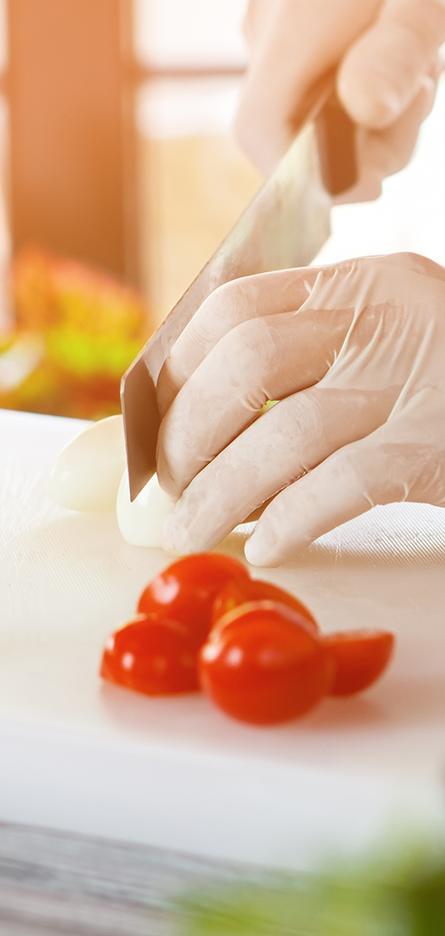
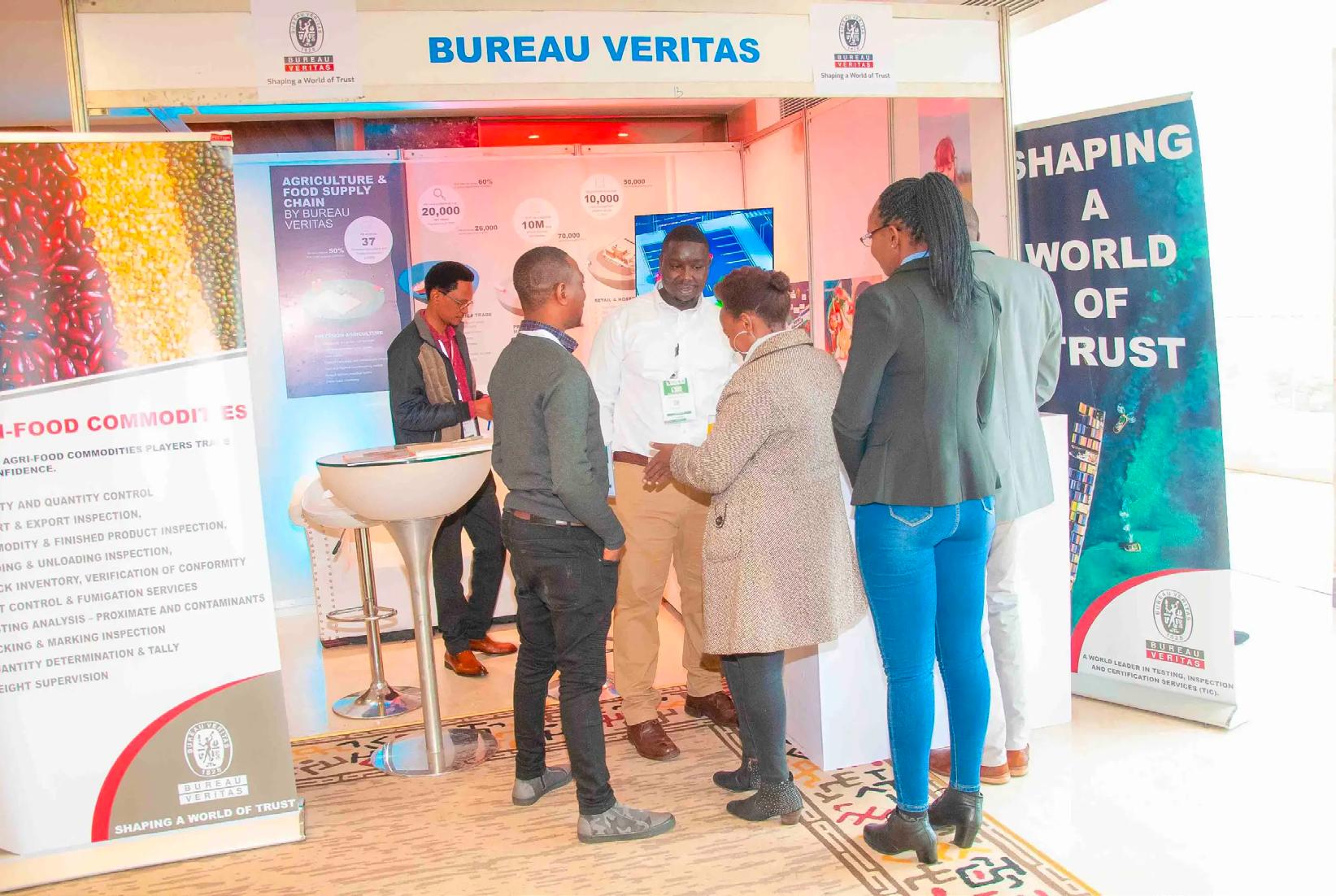



When it comes to cake, we are the best in town," says Mohammed Zahir, CEO of Cake City, one of Kenya's fast-growing cake companies. Of course, every person always markets their product as the best, but Zahir says it with so much confidence and conviction he leaves no doubt in mind that indeed, when it comes to cake, none is better than Cake City's.

Giving us insights into the company’s roots, Zahir tells us that the company was founded in 2012 by Hasnain Noorani, a Kenyan businessman whose businesses spread across hospitality, transport, and real estate, among other sectors.
Ten years ago before Cake City was launched into the market Kenyans did not have a variety of cakes to choose from. Regular flavors such

as Black Forest, Chocolate and Red velvet cakes were the only kinds of cakes that were available in the aisles of cake shops and supermarkets.
With Cake City, Noorani's aim was to offer the Kenyan market a wider variety of cakes to match those he had seen abroad during his travels. The

company hired talented pastry chefs from India to bring in different types of pastries and new varieties of cakes and flavours.
Armed with something new, Cake City launched its first shop in Westlands, one of Nairobi's affluent business districts. The building hosting the shop is modeled as a cake with dripping chocolates and candies.

Getting the word out that there was a new kid on the block offering more than just ordinary cake, however, required more than building a fairytale-like cake shop. The pioneer executives understood the assignment very well. They embarked on a coordinated publicity campaign involving participation in cake festivals and any other festival where pastry products get to be displayed.
They also explored social media, an emerging but powerful marketing tool. At the time, Facebook was the most popular social media network. Zahir said they took advantage of the platform and credited it to some of its initial success.
For the 8 years that he has been at the helm, Zahir has captained growth at Cake City, spearheading entry into new markets, first in Nairobi City and now in other satellite towns.
Today the company enjoys an impressive cakeshop chain comprising ten branches. Two of those branches opened earlier this year representing a remarkable shift in the company's growth strategy.
"We are now trying to reach new markets by opening stores and branches a bit far from Nairobi," Zahir explains. Sales have also been burgeoning. Today, about 72,000 kilograms of cake are dispatched from Cake City to be enjoyed by customers annually. That is a tremendous amount of cake. Considering that half a kilogram of cake is usually enough to be shared among six people, the number of people that have tasted the quality of Cake City cakes is astronomical.

From the word go, Cake City has always had the customer in mind. The variety of cakes that they brought to market was informed by customer desire for more than just buttercream cake. If you visit one of Cake City's shops today, Zahir is confident that you wouldn't leave without a cake that far exceeds your expectations. Out of the 55 different flavors on offer, it would be difficult to imagine that you'd lack one that captures your heart and most importantly, your taste buds.
The company reveals that out of the many options available, fresh cream cakes are the most popular among customers. Trizah Okal, the sales manager at Cake City, explains to us what this cake is, and why it is so popular. "Fresh cream is a totally different product," she explains. "It’s recipe makes the cakes taste more of ice cream than the usual butter which is what we get out of there in the market." Milky caramel, blueberry, and chocolate chip are among the highly soughtafter cakes in this category.
Cake City does not however discriminate. Okal reveals that although Fresh Cream is their signature cake, they certainly don't hesitate to bake buttercream cakes if that is what the customer craves. "Obviously our black and white forest is completely different from what is there in the market," Okal is quick to point out. "If you compare with other cake shops or bakeries, I will proudly say that we are the best."
When it comes to satisfying customer demands, Cake City stops at nothing to ensure every customer leaves with a smile. This at times involves attending to incredibly difficult-tofulfill orders such as delivering a wedding cake a fortnight to the event.
Whatever the order, Cake city goes beyond just baking a good quality cake. Zahir says that
his team will also deliver it to the venue and have it set up for the customer. It's this capability that has enabled Cake City to even prepare instant cakes, the kind you receive when you walk in into one of their branches without prior ordering. Just like its other cakes, Okal assures that these have the same quality and freshness that Cake City cakes are known for.
Okal reveals that Cake City’s specialty is to bring people’s dream cakes into reality. This alludes to customized cakes which are also becoming increasingly popular according to the sales manager. "What people dream is what we create," she says. "If you'd like a Cheetah cake, we will make that. If you fancy a snake, we will make
IN NUMBERS
72,000
it." The company even recently made a cake in the form of a human face, just to demonstrate its capabilities when it comes to producing custom cakes.
The cake went on to win the gold award at the 2022 Cake Festival, highlighting the level of
AMOUNT IN KGS THAT CAKE CITY SELLS IN A YEAR.Cake city team all smiles after wining an award

artistry and professionalism that went into the process.
To give the utmost convenience when ordering cakes, Cake City also maintains an active presence online. With time, Zahir observes that online trends have changed, and today Instagram is one of the leading drivers of business when it comes to online sales. The company has capitalized on this opportunity by creating reels and TikTok videos to keep customers engaged. For a smooth online process, customer service agents are always a phone or text away to assist customers.
Depending on what type of cake is requested, Zahir reveals that customers can anticipate having their cake delivered between 2 and 24 hours from the time of ordering. Such turnaround times require an efficient logistics team and Cake City has a fleet of cars, trucks, and motorcycles to ensure that whatever size of cake you order, it

shall be promptly delivered. It also helps to have many branches as this means that the order will always come from a branch closest to the customer, significantly cutting down on delivery times and other associated costs.
Now in his 8th year as CEO of Cake City, Zahir believes that a focus on excellence is the secret behind the successes that the company has enjoyed over the years.
"I am very keen on Excellence," Zahir admits. "I believe if we focus on excellence, success will follow." This belief has, in turn, shaped how Cake City operates and is arguably one of the reasons it still survives in a market where many new startups fail to stay long enough to celebrate their
NOW IN HIS 8TH YEAR AS CEO, ZAHIR BELIEVES THAT A FOCUS ON EXCELLENCE IS THE SECRET BEHIND THE SUCCESSES THAT THE COMPANY HAS ENJOYED OVER THE YEARS. "I AM VERY KEEN ON EXCELLENCE. I BELIEVE IF WE FOCUS ON IT, EVERYTHING ELSE WILL FOLLOW," HE SAYS.
third anniversary.
Cake City is however today facing tremendous challenges mainly due to raw material price inflation. From wheat flour to eggs, ingredient prices are increasing at a rate far much faster than Zahir is comfortable with. "We cannot increase our prices every time," he laments. "So it becomes a challenge where now we have to still stay afloat, but our margins reduce drastically."
Compromising on quality to save margins is however not something that Cake City is willing to explore, at least not while Zahir is in charge. "I am not those who chase and want to make quick money," he says. "We give the best in what we do. Everything else follows." To remain afloat, the only trick available to Cake City now is volumes. "That is what is helping us thus far," he admits.
Building a sustainable culture is also helping bring in some savings to offset the rising costs of inputs. "We are keen to minimize wastage of energy and are always training our people on how to use these resources responsibly." When it comes to packaging, the company does not compromise on its environmental promise. "We package everything in cardboard boxes which are environmentally friendly," he says.
After conquering the Nairobi market, Cake City has its eyes on other towns outside Nairobi. "Now that we have really taken care of all the areas of Nairobi, we want to reach the other counties. Now it's time to move to Mombasa and Kisumu."




That journey has already started with the two locations that the company recently opened outside Nairobi.
Zahir notes that there is indeed demand for their products outside the capital and he is already receiving requests to set up shop elsewhere. Like previous expansions, these too are expected to be organic to cushion the business from the risks of expanding too fast.
An optimistic Okal, however, can't wait for Cake City to be in every in each and every city. Only then will she be able to see her dream of Cake City becoming a national brand come to fruition. His Boss Zahir is working towards that "and if there is more demand maybe also go regional and expand into the rest of East Africa." His parting shot gives a summary of why the business exists. "People are celebrating every day. Every day we have occasions," he says. "So if they think to celebrate and they would want a cake, why not have a cake city cake and have an experience like no other?"
 BY PAUL ORINA
BY PAUL ORINA
Straddled between Cameroon and Benin is Nigeria, Africa’s most populous country. The country is home to an estimated 217 million people which roughly translates to 15% of Africa’s population and over 60% of West Africa’s population. Given the size of its population, the country has to produce a staggering amount of food, grains included. The International Grains Council (IGC) puts Nigeria’s total 2022-23 grains production at 21.6 million tonnes. Maize and Sorghum, the country’s major cereal staples account for much of the product at 12.5 million tonnes and 7 million tonnes respectively. Rice takes the third position at 5.4 million tonnes. Despite Nigeria having the most substantial
Home to Africa’s most substantial arable land, Nigeria is a country full of unexploited agricultural potentialA REVIEW OF THE INVESTMENTS OPPORTUNITIES IN THE GEAINS INDUSTRY IN MIDDLE EAST & AFRICA
arable land in Africa, what it produces is not enough to meet local needs. According to the United States Department of Agriculture, Nigeria relies on imports to meet its food and agricultural needs (primarily wheat, rice, poultry, fish, food services, consumer-oriented foods, etc.) worth about US$10 billion annually. For the 2022-23 season, IGC forecasts that Nigeria will import 2.1 million tonnes of rice and 5.9 million tonnes of wheat.
Still, the country has not lost its eye on import substitution with locally grown alternatives. A number of sectors from wheat to rice are receiving considerable government support to boost production. This has become even more important today when the Russo-Ukrainian war has disrupted global Agri commodities markets resulting in a spike in food prices.
Nigeria is not known for wheat production despite it being the third most consumed staple behind maize and rice. Nigeria has traditionally relied on imports particularly from Russia and the Baltic states to meet demand. This trend is expected to
continue in the medium term. “Nigeria imports more than 50% of its wheat requirement from Russia and other Black Sea countries,” an attaché of USDA’s Foreign Agricultural Service post in Lagos said. “To reduce the domestic price of wheat flour and sustain profitability, most Nigerian flour mills buy cheaper wheat from Russia, Latvia and Lithuania. Mills are enhancing their practices of blending cheaper, low-quality wheat with more expensive high-quality hard red winter from the United States.”
With Russia’s blockade of Ukrainian ports and the effect of sanctions imposed by the EU and other Western countries causing a surge in wheat prices, Wheat millers have increased the cost of wheat flour to accommodate the high price of logistics and diesel cost. In response, the Association of Master Bakers and Caterers of Nigeria (AMBCN) ordered its members to increase the prices of bread and other products by 30% “due to the prevailing economic situation in the country.” As bread becomes more expensive, many lower-income houses are opting for substitutes like maize, yam, and sweet potato products that are relatively affordable. To avoid

closing shop, bakeries are on the other hand are exploring the options of blending wheat with cassava flour, millet flour, and sweet potato flour, said the FAS Lagos report.
In the short term, Nigerian officials are collaborating with the private sector in diversifying the country’s wheat sources. For instance, the Ministry of Industry, Trade, and Investment approved Crown Flour Mill’s request to import wheat from India. The strategy is working thus far. For example, during the first half of 2022, Nigeria’s wheat imports came mainly from North and South America. Still, industry players are calling for the government to do more to stabilize local wheat prices. In July last year, the Premium Bread Bakers Association of Nigeria went on strike, demanding the government remove the 15% duty paid on all wheat imports to lower the cost of wheat-based commodities. This however did not bear fruit as the tax is still in force to date.
To unshackle itself from the chains of wheat importation, Nigeria has embarked on a robust local production program and is already making major wins although it still has a long way to go in its wheat self-sufficiency agenda. According to the FAS lagos report on the grains sector, Nigeria will produce 160,000 tonnes of wheat in 202223, up from 90,000 in 2021-22. This comes as Wheat production in Nigeria is experiencing renewed attention from the government, the African Development Bank, and researchers.
So far, rainfed wheat has been successfully grown in Nigeria’s three highlands — Gembu (Taraba State), Jos (Plateau State) and Obudu
(Cross River State). The Central Bank of Nigeria through its Anchor Borrowers Program (ABP) is collaborating with the Wheat Farmers Association of Nigeria (WFAN) to extend wheat production from 5 states to 15 states. The bank provides loans to support the farmers and gives seeds (with short gestation period) imported from Mexico to assist the farmers. About 13,000 tonnes of heat-resistant seeds imported by CBN in 2021 have undergone multiplication in Jos, Plateau State and are ready to be distributed to the farmers. “Yield per hectare is forecast to improve by 18% (1.3 tonnes per hectare) as compared to (1.125 tonnes per hectare) reported for marketing year 2021-22,” the report noted.
Private companies including Olam Flour Mills, in tandem with other research institutes such as the Lake Chad Research Institute (LCRI) and International Center for Agricultural Research in the Dry Areas (ICARDA), have set up a N300 million (US$720,000) 10-year community seed project (heat tolerant variety) for Nigerian farmers to increase production of wheat and to strengthen agricultural production in northern Nigeria’s wheat farming belt, the attaché said. In July last year Nigeria became the latest country to approve imports of Buenos Aires, Argentinabased Bioceres Crop Solutions’ proprietary drought-tolerant HB4 wheat variety, according to Reuters. Nigeria follows recent approvals by

NIGERIA HAS A HIGHLY CONCENTRATED FLOUR MILLING SECTOR. IN 2021, FLOUR MILLS OF NIGERIA ACQUIRED HONEY
WELL FLOUR MILLS PLC. THE TWO COMPANIES HAVE A COMBINED MARKET SHARE OF 70%.
Brazil, Colombia, Australia and New Zealand for use of HB4 in food and feed.
Both local and imported wheat are serviced by a flour milling sector that is highly consolidated. In 2021, the largest company in the sector, Flour Mills of Nigeria PLC, acquired a majority stake in Honeywell Flour Mills PLC, its major competitor. Flour Mills of Nigeria has a flour milling capacity of about 12,000 tonnes a day, while the capacity

of Honeywell Flour Mills is about 2,500 tonnes a day. The two companies have a combined market share of 70%.
In general, the large flour mills owned by FMN, Honeywell, BUA and Olam are highly integrated. Efficient purchasing, transporting and processing systems strengthen their competitive advantages. The top milling companies — FMN, Olam, Dangote, Charghoury and Honeywell — control 32%, 24%, 19%, 11% and 10% of the market share, respectively, while all other small millers account for 4%. Analyst KMPG said the three largest players in Nigeria’s flour milling market account for approximately 75% of total revenues.
FAS Lagos estimates Nigeria’s MY2022/23 corn production at 12.1 million metric tons (MMT), a roughly 5 percent decrease compared to the USDA MY 2021/22 figure of 12.5 million tons (MMT). Regional insecurity across Nigeria’s corn belt hampers corn production as farmers abandon their farms and escape to nonviolent areas in cities. In the Northwest, farmers pay taxes to armed gangs to access farms and this could be the reason for a 3% decline in the total area under corn production in MY2022/23. Production costs have increased significantly for corn farmers further limiting their ability to grow. For example, a bag of fertilizer currently cost more than 22,000 naira (US$52) compared to 15,000 naira in 2021. Production may however rise in future as the government will begin
160,000 IN NUMBERS

national performance trials (NPT) for GE TELA maize in a few months as Nigeria makes another leap toward increasing productivity, especially for smallholder farmers
Consumption however remains steady as Corn is the staple meal for many Nigerians and is the most critical ingredient in producing animal and aquaculture feed. Nigerians consume corn meal, especially for breakfast. The demand for breakfast food made from fermented corn has increased due to rising prices for wheat-based products – bread in particular. Imports are minimal as CBN forbids banks from issuing foreign exchange form (Form M) to importers. Nevertheless, Post estimates imports for MY2022/23 at 50,000 metric tons (MT), a reduction from 200,000 metric tons (MT) recorded last marketing year by Post. Multinational companies producing food and animal feed products in Nigeria were the leading importers in 2021 as they have import approvals from the CBN.
Just as maize, rice production is
expected to contract 7% to 7.8 million metric tons (MMT) due to insecurity in the northern part of the country. Flood incidents are also expected to
impact upland rice cultivation. With rice consumption forecasted at 6.9 million metric tons (MMT), a 5 percent decrease from last year, Nigeria can be considered self-sufficient. The country is however forced to import as most Nigerians generally prefer imported rice because of the white color and the absence of impurities such as “rocks”. FAS Lagos estimates MY2022/23 imports to be 1.5 million metric tons (MMT) compared to USDA’s 2.2 million metric tons (MMT) projection for last year. Importing rice is however an expensive affair as the CBN prohibits rice importers from accessing funds through the Importers and Exporters (I&E) window. Import tariff on rice also exists and it varies according to the importer’s role in the value chain. For example, a rice trader will pay an import duty of 10% and a levy of 50%. In contrast an integrated miller with a verified backward integration program (i.e., rice farms) will pay an import duty of 10% and a levy of 20% for importing rice paddy.
With Nigeria’s population rapidly growing, Rice self-sufficiency is a key

JUST AS MAIZE, RICE PRODUCTION IS EXPECTED TO CONTRACT 7% TO 7.8 MILLION METRIC TONNES DUE TO INSECURITY AND FLOOD INCIDENTS.
political goal of the government and the central bank. As part of its efforts to strengthen rice production and milling capacity, the government approved an intervention fund to complete 10 large-scale rice mills with a total capacity of 320 metric ton per day in 10 states. In addition, government supports are underway to strengthen existing dams in Nigeria for irrigation purposes. In addition, the government is encouraging technology start-up companies to enter the agricultural sector- to transform rice farming, processing, and selling across Nigeria.
As the world’s largest sorghum producer, Nigeria is forecast to produce 7.2 million tonnes of the ancient grain in MY2022/23, according to FAS Lagos. The rise is attributed to the military’s counter-insurgency program which has reduced insurgency and improved communal farming activities in Nigeria’s Northeastern states where Guinea sorghum is widely cultivated. FAS Lagos estimates Nigeria’s total sorghum consumption (including food, feed, and industrial usage/ FSI) in MY 2022/23 at 6.8 million metric tons (MMT), an increase of 3 percent compared to approximately 6.6 million metric tons (MMT) recorded the previous year by USDA.
Most drivers of consumption are households, particularly in the Northern states where sorghum is the staple food. In addition, sorghum is proving its worth as a valuable source of food assistance – as a suitable food ration for internally displaced people across the northern part of the country. Industrial end users are predominantly companies producing beverages, cereals, and confectionery. Increasingly, animal feed producers use a small percentage of the grain. Meanwhile, industrial sorghum companies use less expensive sorghum-based intermediate products - to lower costs. FAS noted that in early 2020, several exporters made efforts to export sorghum to the United Kingdom. However, the Covid-19 pandemic destroyed prospective export deals.
Meanwhile, the country could become a major producer of soybean in Africa. In June last year, FAS Lagos forecasted Nigeria’s soybean production for MY 2022-23 at 1.35 million tonnes, 20% up on the previous year. “Soybean is a crop well suited to Nigeria’s topography and ecological conditions,” the report said. “Consumption is strong due to growing demand in the food processing and feed use sectors. Food processors use soybeans to produce soy milk, soy cake, soy
yogurt, and to fortify local carbohydrate-based Nigerian food staples (e.g., garri and rice).”
As earlier stated, Nigeria has one of the most substantial arable land in the African continent which if fully utilized could fully feed its population that continues to expand by the day. Radical and concerted efforts by the state and other actors is however needed to unlock the country’s true food security potential. The barley malt ban of the 1980s is a good example of how certain measures could actually spur local production. Nigeria’s sorghum production reached a peak of 11 million tonnes. As climate change beckons, resources however need to be diverted to climate-smart agriculture, and its good to see that the country is embracing genetically engineered plants as one of the pathways to food security. More however needs to be done, particularly in the areas of providing sufficient extension services to farmers, provision of quality and affordable certified seeds and fertilizer, and increasing farmer access to loans in order to incentivize them to produce more. If these challenges are addressed, I am confident that nothing will stand in the way between Nigeria and her lofty food security ambitions

 BY WANGARI KAMAU
BY WANGARI KAMAU
Wheat prices have been on an upward trend in recent years largely due to the RussoUkrainian war which has disrupted exports from both Russia and Ukraine, two of the most important wheat exporters in the world accounting for more than a quarter of the world’s total wheat supply.
East Africa has been heavily impacted by the
war as the region largely depends on wheat from these two countries. Argentina, another major supplier of wheat to the region, had a terrible 2021/22 season due to a prolonged drought, followed by a harvest in the wet season that impacted both the quality and quantity of wheat. Even Australia, another source country, was adversely impacted by a prolonged dry season, meaning it had less wheat for exports. With diminished supply, millers in the region have had
to contend with highly-priced wheat that is of unreliable quality.
During the just concluded milling and bakery workshop by Ait Ingredients in Nairobi, Kenya, Joy Mwangi, a senior laboratory technician at AIT East Africa made an interesting observation. She noted that despite the changes in wheat grain prices of 50-60% worldwide, consumers have been experiencing increases of only 10-20% from millers and 5-10% from bakers. “These slight increases are not significant to the price increases in the wheat grain. This is a big concern because either the millers or the bakers are making losses and not maximizing their profitability,” Joy comments.
Millers, however, don’t have to sacrifice margins in a push to shield their clients from the high cost of wheat prices. Joy notes that optimizing the wheat blending process could be all the millers need to take back control of the final quality and cost of their products. This article explores the key decision-making criteria that millers must consider when optimizing their wheat blending processes to achieve the highest quality of flour for a particular purpose at the least cost possible.
Getting the flour blending right starts with sourcing. Before sourcing, the miller must first consider the intended use of the flour. Different wheat products such as bread, pastries, and cakes require flours of different specifications which are primarily influenced by the composition of the initial grain. Getting wheat grain that is optimally suited for the final wheat product helps enhance the efficiency of the milling process, saves on costs, and ensures customers get consistent high-quality flour for their desired purposes.

With the desired type of wheat in mind, sourcing the desired quality of wheat can be quite challenging. “In the last few months, we have been experiencing deviations in the quality of the product we anticipate to receive. Sometimes, we order wheat of 13.5% protein and instead receive wheat of 12.5% protein,” Joy explains. To avoid such undesired eventualities, Joy advises millers to identify and only source their wheat from trusted and reliable traders. This ensures that you always receive wheat as per the specifications they had promised you prior to purchase. “For example, if they tell you that this wheat is coming at 13.5% protein content that is what you are receiving. If the foreign matter in the wheat is less than 5%, that is exactly what you will receive when the
consignment arrives at your factory premises.” Dealing with unreliable trader exposes you to receiving wheat whose quality is uncertain and might force you to incur extra costs in cleaning the wheat to remove excess foreign matter or in blending wheat to achieve the desired quality of wheat.
Lastly, when it comes to wheat sourcing, timing is of utmost importance. “If you source when the prices are low, you are able to be more competitive in the market but if you start sourcing when the prices have shot up it eats into your profitability,” Joy advises. Knowledge of the country of origin, planting season, harvesting time, and production outlook comes in handy when it comes to timing. For instance, if the source country was forecast to have a bumper harvest and the harvest season is at its peak, millers can anticipate favorable prices and plan to buy early on before prices start to spike. Conversely, if the wheat outlook is grim, millers can anticipate higher wheat prices and plan to look for other alternative sources where prices are competitive.
Wheat is categorized as hard, semi-hard, or soft wheat depending on its protein content with hard wheats having the highest protein content levels of between 13.5 to 15% and soft wheat having the lowest protein content (8.5 to 10.5%). As wheat pricing is based on protein content, hard wheat, which is used in making bread, buns, and pasta
WHEN IT COMES TO WHEAT SOURCING, TIMING IS OF UTMOST IMPORTANCE. IF YOU SOURCE WHEN WHEN THE PRICES ARE LOW, YOU ARE ABLE TO BE COMPETITIVE.
products, is often expensively priced compared to soft wheat.
To keep raw material costs at a minimum, millers often blend soft and hard wheat. Blending, otherwise known as gristing, also allows millers to maintain consistency in the quality of their final flour despite receiving wheat of varying protein specifications. Additionally, blending allows millers to develop unique products that give them a competitive edge in the market.
To optimize the gristing process, Joy notes that knowing the quality of the wheat that comes to the factory is important as it helps inform the level of blending required to achieve the desired grain for milling. As mentioned before, during wheat sourcing, millers can get quality deviations in the wheat they receive, getting consignments with a low protein content that call for blending with wheat of higher quality.
The second factor that is critical in the blending process is the quality of the desired product. Different end products beg for different compositions of the raw materials, thereby informing the process of wheat blending at different levels. For example, flour that is needed for bread making will have a different constitution from flour needed for pastries and cakes.
Also when customer requirements demand that their flours have a certain percentage of protein, it is up to millers to work on solutions that ensure the customers get the desired quality while maintaining the profitability of the business

as well.
Lastly, the need to minimize the cost of raw materials influences blending decisions. Gristing allows millers to minimize costs by maximizing the use of the cheaper soft wheat varieties and using minimal levels of the costly hard wheat while ensuring that there is no compromise to the quality of the resultant flour.
“You need to know your gristing costs. You ought to know the individual costs of every variety of wheat,” Joy Mwangi insists. For example, if soft wheat goes for 45ksh/kg and hard wheat goes for 65ksh/kg, blending involving the use of a small percentage of the hard wheat and more of the soft wheat cuts down the total gristing cost to maximize profitability. Owing to the higher prices of acquiring hard wheat, millers should aim at saving as much of their hard wheat supplies as they can, and utilize soft wheat maximally.
This optimization is especially important because of the price volatility of wheat, which primarily affects hard wheat varieties. According to Joy, “if you can go as far as utilizing 90% of soft wheat and 10% of hard wheat, that would be quite impressive and cost-saving.” Moreover, saving these hard wheat shields millers if they receive future consignments of lower-quality wheat.
Sometimes, even after the gristing process, millers may fail to achieve the desired quality of their wheat. This is because, apart from the protein,
BLENDING ALLOWS MILLERS TO MAINTAIN CONSISTENCY IN THE QUALITY OF THEIR FINAL FLOUR DESPITE RECEIVING WHEAT OF VARYING PROTEIN SPECIFICATIONS.
wheat is also comprised of other components including starch, non-starchy polysaccharides, lipids, inorganic components, and trace elements which all affect how flour behaves when subjected to a baking process. These components are mostly adjusted to the desired level through a process called flour correction.
With flour correction, millers can always have a standard flour released to market despite the quality of wheat they receive varying from one batch to another. Moreover, flour correction provides millers with a competitive edge when it comes to product differentiation. “With flour blending and wheat sourcing, every other miller is doing the same thing as you. What will define you differently are the flour correctors. We come to you, analyze the quality of your flour, and develop a customized product for your needs,” Joy advises.
During flour correction, an optimization tool, such as the one offered by AIT Ingredients is used to determine the levels of the various wheat components. The rapid test saves millers time that they would have spent conducting rheology tests and gives an accurate picture of the levels of each wheat component which they can then improve using flour correctors to their desired level.

With flour correction, even the protein content in the flour can be improved. This allows millers
to use a greater amount of the soft wheat in their operations. “We complement the quality of soft wheat with flour correctors,” Joy commented, explaining that with flour correction, it is possible to save 5-25% in the cost of acquiring raw materials.
When it comes to flour correction, enzymes are preferred as they only alter the specific component of the grain desired by the miller. They are also generally regarded as safe as they get denatured at temperatures higher than 40℃ and therefore do not persist in the final consumer product.
When used in flour correction, enzymes correct the baking performance of flour. They also optimize the technological process parameters to attain the needed dough properties. They also ensure the quality of baked products and allow the production of specialty flours.
Enzymatic correctors at the milling level include amylases, proteases, lipases, hemicellulases, and oxidases. Amylases act on starch, breaking it into simple sugars on which the yeast acts during the fermentation process. This positively impacts CO2 production fermentation leading to production of baked goods with the desired volume.
Amylases also contribute to the shelf-life
IN NUMBERS
flour quality analysis ensures flour correction is effective
PERCENTAGE SAVING MILLERS CAN GET WHEN USING FLOUR CORRECTORS.
25%
of baked products. This is because the breakdown of starches allows for more water uptake which makes baked products to stay fresh longer. Moreover, these enzymes contribute to the brown color of baked products as a result of caramelization and Maillard reactions with amino acids during baking.
On the other hand, hemicellulases act on non-starchy polysaccharides, breaking down fiber into simple sugars. Therefore, similar to amylases, they impact the volume, improve machinability, and prevent dough stiffening. They also contribute to the fine texture of baked products.
Proteases break down the protein strands of the gluten skeleton, reducing dough resistance, shortening dough resting time and enhancing flavor and browning. Proteases are especially applicable in biscuit and cookie production because they promote extensibility, preventing biscuits from cracking and enhancing their flavor and color.
Similarly, lipases act on lipids in wheat flour and act as emulsifiers. They enhance Fermentation tolerance by promoting gas retention during fermentation. They also promote dough stability during processing and also have enhance crumb softness, thus increasing shelf life. They also bleach flour pigments, resulting in a brighter crumb that is firm as well.
Another important group of enzymes is the oxidases. These correctors strengthen the s-s bonds in
the protein network of the dough, thus strengthening the gluten. These are important correctors when millers get soft wheat, with a low gluten index. The resultant effect is that they improve the tolerance of dough to fermentation, which also supports volume in baked products. They also enhance the crispiness of the crust in baked products. Bakers also have a chance of improving their flour if millers failed in the gristing or flour correction stages. When it comes to flour improvement, non-enzymatic correctors such as ascorbic acid and active soy flour are used. Ascorbic acid improves dough tolerance to fermentation by strengthening the ss bonds in the protein network and improving machinability. This enhances the volume of baked products and improves crust crispiness. Active soy flour, on the other hand, promotes dough stability and creates a
brighter crumb in baked products. Additionally, using gluten boosters and replacers allows for gluten strengthening in soft wheat, helping millers reduce the cost of raw materials. These replacers promote gas retention and dough stabilization, impacting the volume of baked products. This way, millers can optimize their flour blends by easily utilizing a lot of soft wheat in breadmaking.

Another improver is cysteine, which also acts on the ss bonds in the protein network of wheat flour, weakening the strands to promote extensibility. This also reduces kneading time and makes it easier to handle dough during processing. Other improvers include lecithin and fatty acids (mono and diglycerides), and both are emulsifiers. They lead to fine crumb development, softness, and thus increased shelf life.
A parting shot for millers is that Flour correction is an intricate process that requires customization. There is no one size fits all solution for flour blend optimization as characteristics of wheat grains vary from one batch to another. Millers must therefore understand their wheat profile and determine the desired output profile before deciding on which flour correctors to use in their blend optimization. Talking to flour improvement experts before embarking on a flour blending exercise could be the difference between consistently satisfying customer demands and always responding to customer complaints about poor-quality flour
TALKING TO FLOUR IMPROVEMENT EXPERTS BEFORE EMBARKING ON A FLOUR BLENDING EXERCISE COULD BE THE DIFFERENCE BETWEEN CONSISTENTLY SATISFYING CUSTOMER DEMANDS AND ALWAYS RESPONDING TO CUSTOMER COMPLAINTS.

ADVERTISE IN MILLING MIDDLE EAST & AFRICA - REGION'S ONLY GRAINS

INDUSTRY MAGAZINE


• Reach the key decision makers in Africa & Middle East grains, milling, bakery, animal feed, snacks and pet food industry with one magazine


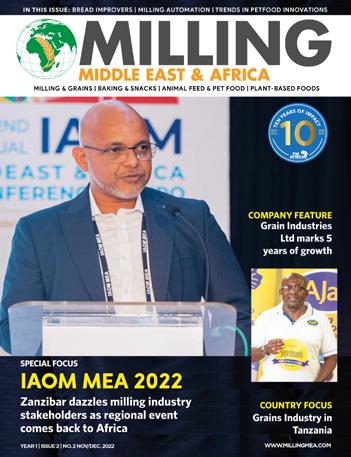

• Milling Middle East & Africa is the only magazine focused on the grains industry in the region

• The magazine is available in both print and digital format, providing our advertisers with a regional and worldwide audience
• We offer more than just the magazine - we also offer digital advertising, organise industry events and webinars

The idea of sorghum displacing maize as Africa’s number one crop may seem like a pipe dream now, but climate change and popularity of indigenous foods point to a future where such a reality is possible
BY ABEL NDEDADespite an onslaught by maize, Sorghum (Sorghum bicolor) still holds its head above the shoulders as Africa’s most important crop. First domesticated in the EthiopiaSudan region in northeast Africa some 8,000 years ago, the crop has spread far and wide and is today produced in almost every country in the continent, from Egypt in the North to South Africa in the South. On the global scene, Sorghum is not performing badly either. It is the fifth most produced cereal crop after wheat, maize, rice, and barley.
In terms of tonnage, sorghum is Africa's second most important cereal. The continent produces about 20 million tonnes of sorghum per annum, about one-third of the world crop. But let not numbers lie to you, sorghum’s importance in the continent if far ahead that of maize or any other crop for that matter.
Sorghum is uniquely adapted to Africa's climate, being both drought resistant and able to withstand periods of water-logging. This makes the only viable food grain for many of the world's most food insecure people, many of whom live

in Africa. Sorghum in Africa is processed into a very wide variety of attractive and nutritious traditional foods, such as semi-leavened bread, couscous, dumplings and fermented and nonfermented porridges. As Africa’s true indigenous cereal, sorghum is also an important part of culture and traditions. It especially comes in handy when ancestral offerings have to be made “You can't communicate with the ancestors with maize because they don't understand what it is and they get confused,” says Mpho Tshukudu, a South African dietician.
After facing marginalization for decades as a poor man’s food, Sorghum is starting to gain its previous flair as Africa’s number one food crop. Although displacing maize may seem like a pipe dream now, it may certainly be a reality in future as climate change and rising demand for indigenous foods incentivize more farmers to plant the once frowned upon crop. The growth in the global sorghum seed market is proof that farmers are increasingly becoming more open to the idea of sorghum farming. According to the business research company, the global sorghum seed market size grew from US$1.85 billion in 2022 to $1.99 billion in 2023 at a compound annual growth rate (CAGR) of 7.2%. The market size is further expected to grow to $2.46 billion in 2027 at a CAGR of 5.5%.
The global sorghum production for market year 2022/23 is estimated at 58.03 million metric tonnes (MMT), a 3.94 MMT reduction from the 61.97MMT estimated for the 2021/22 market year, according to the World Agricultural Production (WAP) forecast by the United States Department of Agriculture (USDA). The decline could be attributed to a sharp decline in forecasted yield in the United States.
According to the WAP report, sorghum yields in the United States are expected to decline from 4.33 tonnes per hectare(T/ha) in MY2021/22 to 2.58 T/ha in MY2022/23. Total area under sorghum production is expected to slightly decline from 41.44M ha in MY2021/22 to 40.77M ha in MY2022/23 impacting global sorghum production.
With yields almost halving in the United States, Nigeria is expected to overtake the North American country as the world’s largest sorghum producer. According to the WAP report released in March, Nigeria is forecasted to produce about 7 MMT tonnes of sorghum in MY2022/23
from an estimated planted area of 5.7 million hectares. The 2023 forecast is a represents a rise of about 275,000 tonnes compared to estimated production figures from 2022. Sudan takes the number two spot both globally and in Africa at a forested production of about 5MMT for the MY2022/23. Ethiopia comes in third in Africa and fifth globally at a forecasted production of about 4.5MMT. Other countries comprising Africa’s top list in respective order include Burkina Faso (1.9MMT), Niger (1.9MMT), Mali (1.5MMT), Cameroon (1.2MMT), Chad (950,000MT), South Sudan (750,000MT), Egypt (750MMT), and Tanzania (750,000MT).
In the East Africa region, Tanzania leads the region in terms of production. According to data from the Foreign Agricultural Service (FAS) of the USDA, Tanzania is forecasted to produce 750,000MT of sorghum from 700,000 ha of land. Its neighbors Uganda and Kenya are forecast to produce 225,000MT and 200,000 in the 2023MY. Of the founding members of the East African Community, only Tanzania seems to get it right when it comes to sorghum production. The country is forecast to report a 1.1 T/ha yield in MY2023, which is a 0.1T/ha improvement from MY2022/23. Uganda however reported a decline in yields to 0.9T/ha, a 0.4T/ ha decline from the previous MY estimates. Kenya on the other hand trails its neighbors with a yield of 0.8T/ha in MY2022/23 as well as in the previous year. In the wider Eastern Africa region, Ethiopia leads with a yield of 2.7T/ha. Nevertheless, preliminary regional sorghum
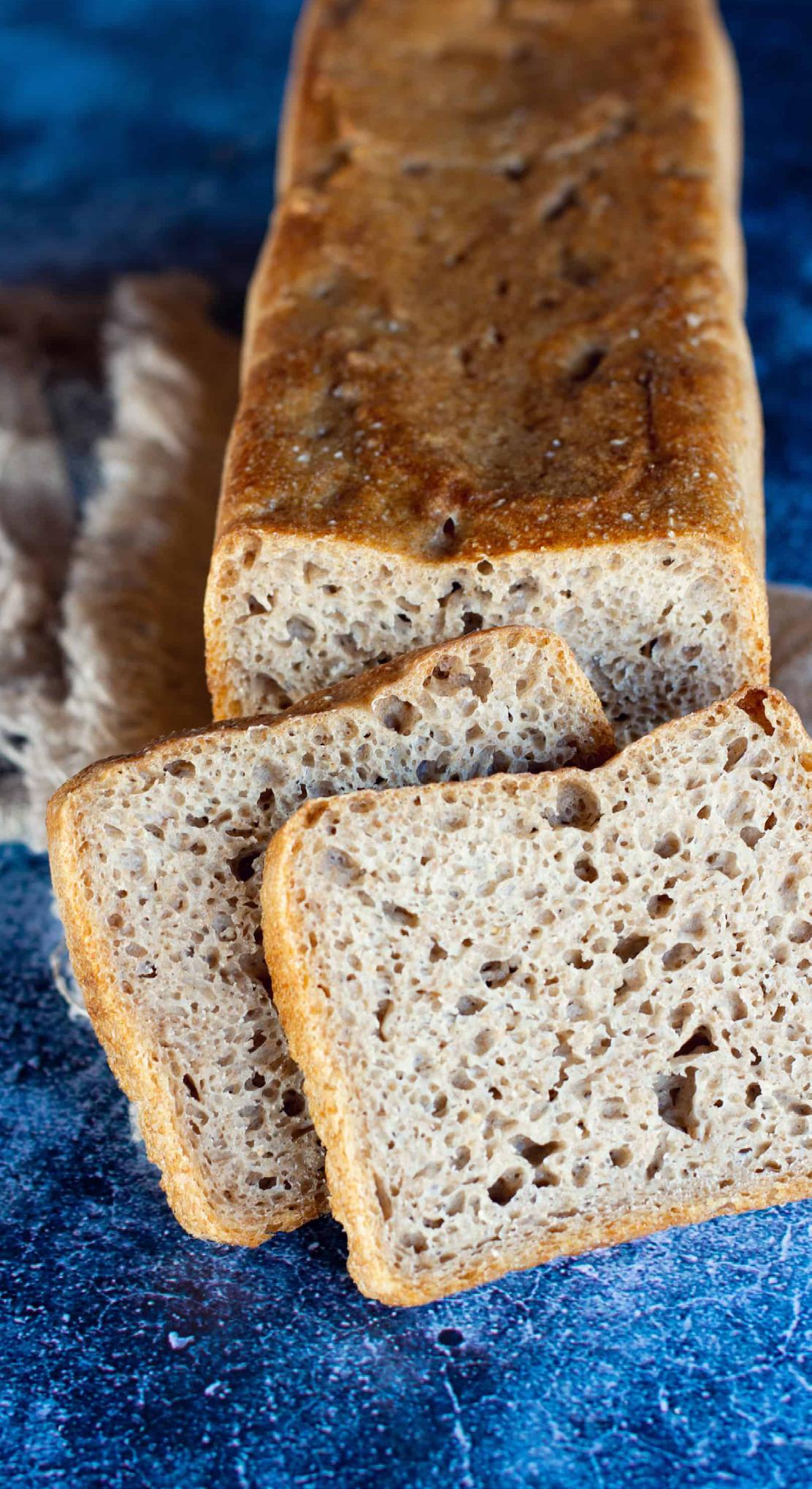
production estimates for Marketing Year (MY) 2022/23 spanning from October 2022 to September 2023 are nine percent below average, according to Famine Early Warning System Network (FEWS). Opening stocks in the region are estimated to be 92 percent below average but demand is said to be average, resulting in selfsufficiency and regional balances of 15 and 103 percent below average. The FEWS report further indicates that import requirements in South Sudan and Somalia are expected to be above average. South Sudan will likely draw supplies from Uganda and Sudan while Somalia is expected to turn to Ethiopia to fill the deficit, according to the report.
Sorghum has been, for centuries, one of the most important staple foods for millions of people in the semiarid tropics
of Africa. Despite the popularity of maize, the cereal continues to remain a principal source of energy, protein, vitamins, and minerals for millions across the continent, particularly in the Sahel region and northeastern Africa where it is planted with little to no fertilizer. From semi-leavened bread,

couscous, and dumplings, to fermented and non-fermented porridges, African consumers have figured out a way of incorporating sorghum into almost every meal time.
It is the grain of choice for brewing traditional African beers across the continent and is increasingly becoming quite a common raw material for the production of lagers in many breweries across the continent. Diageo-owned East African Breweries uses sorghum in a number of its beers. From Kenya to Tanzania and Uganda, the company has contracted farmers to plant sorghum for use in beer production. Senator Keg is a good example of excellent beers produced from sorghum. In the 1980s, Nigeria imposed a ban on barley malt imports, a move that spurred the use of sorghum in beer production. By 2008, sorghum production had grown to 11 million tonnes annually, making the country the largest producer globally. A reversal in the ban has adversely impacted the industry but sorghum continues to be extensively used in the beer industry as well as a source of food for many in the rural areas.
If not for use in beer, sorghum consumption has largely remained low in Eastern and Southern Africa particularly due to the stigmatization of the crop as a poor mans foods. New products such as instant soft porridge are however starting to emerge with considerable success particularly in the up market where demand for indigenous whole grains are becoming increasingly popular for their perceived

Sorghum-based products are gaining shelf-space in supermarkets
FROM SEMI-LEAVENED BREAD, COUSCOUS, AND DUMPLINGS, TO FERMENTED AND NONFERMENTED PORRIDGES, AFRICANS HAVE FIGURED OUT WAYS TO INCORPORATE SORGHUM INTO ALMOST EVERY MEAL TIME.
superior nutritional value. In South Africa where sorghum consumption has been declining faster than anywhere in the continent, new sorghumbased products such as Maltabella Porridge, King Kong Malted Sorghum, Mabele Cereal, and Morvite Sorghum Flour are starting to appear on the mainstream commercial market, pointing to a future where sorghum might regain its popularity as Africa’s number one staple food.
With rising wheat prices and varying market availability, Sorghum is once again on the radar as mills look for ways to make raw materials sourcing less dependent on the global wheat market. Mühlenchemie, one of the world's leading companies in the field of flour treatment is helping make the transition to sorghum possible.
The company has developed a new series of enzyme-based products that improve baking results with composite flours from grains such as maize, cassava, or sorghum, which are grown and available locally in many parts of the world.
In the African continent especially, the idea of using “composite flour” is gaining momentum, said Liezel Huysamen, senior application technologist, southern Africa, for flour improvement specialist Mühlenchemie. Mühlenchemie has responded to the new technical challenges and developed a raw material concept that deliberately excludes the use of vital gluten to keep the cost of flour treatment as low as possible for the mills.
With Compozym from Mühlenchemie, these crops can replace up to 20% of the wheat without impairing quality. Besides the basic treatments, the toolbox includes “on-top” applications that specifically promote such attributes as a highly succulent crumb, delayed retrogradation, or greater tolerance to long fermentation times. In such cases, Compozym may be combined with products from Alphamalt Fresh or EMCEbest WA ranges. The new Compozym product line was developed based on analyses in rheology and subsequently in the baking laboratory and has been tested and refined with a wide variety of flours and applications. The solutions can be used for tin loaves like sandwich bread, freestanding bread like baguettes and fino, and flatbreads like
Brewing industry is one of the biggest consumers of sorghum in Africa.


IN NUMBERS
58.3MMT
USAID launched a program to boost sorghum resistance against striga.
From a journal titled, The Assessment of sorghum production constraints and farmer preferences for sorghum variety in Uganda: implications for nutritional quality breeding, lack of improved crop varieties (released and disseminated varieties) was ranked as the major constraint across the study areas, which can be extrapolated to other parts of Africa where yields per hectare are low.
Other important constraints reported by farmers with an average mean of above 50 were drought, lack of agricultural extension services, high costs of production input, bird damage, small land holdings, insect pests, limited market access, and pests and diseases. Most farmers cultivated a single variety of sorghum rather than a combination of different varieties. As well as rare usage of fertilizer, not even the available manure. A lack of ready markets also constrains both production and profitability.
To lift the continent and the world from the challenges, Bishop Stuart University has pointed out in an article titled ‘Innovation Opportunities in Sorghum Production in Uganda’ that some of the identified opportunities among others

include increasing farm-level production through enacting supportive policy and providing support to research centers like KAZARDI in seed production and distribution, and in the introduction of small-scale sorghum processing, increasing their capacity as well as that of the existing processing entities.
A number of sorghum varieties have been meticulously engineered to adapt to the current environment and climatic conditions as the world tries to improve its food security. International research organization ICRISAT has, for instance, teamed up with the Pan African Seed Company Seed Co Group to develop a new hybrid of white sorghum (great millet) that is high yielding and promises greater resilience to erratic rainfall. The new invention has a yield potential of up to 8 tonnes per hectare, offering farmers a 25% yield increase over existing varieties. ICRISAT now plans to produce the seed at scale to sell to smallscale farmers from the drylands.
Additionally, Purdue University’s Mitch Tuinstra, professor of plant breeding and genetics and scientific director of the Institute for Plant Sciences in the College of Agriculture,
developed a dhurrin-free sorghum technology that is expected to set farmers’ minds at ease. Dhurrin is a cyanogenic glycoside produced in many plants as a chemical defense against herbivores and pathogens via the release of toxic hydrogen cyanide gas.
In January, The U.S. Agency for International Development (USAID) launched a new publicprivate partnership project “Feed the Future Striga Smart Sorghum for Africa (SSSfA)” in Kenya and Ethiopia that utilizes CRISPR genome editing to develop new sorghum varieties resistant to Striga. Striga is a parasitic weed responsible for up to 100 percent yield loss in Africa’s staple cereals, thus posing a great danger to the livelihoods of millions of smallholder farmers on the continent.
In partnership with corporate and public sector players, Egerton University in Kenya has created high-yielding, disease- and droughtresistant crop varieties including five new sorghum seed varieties designed to yield industrial raw materials in the manufacture of alcoholic beverages, bakery products, animal feeds, and ethanol. After a successful National performance trial conducted by KEPHIS lead researcher, Professor Erick Cheruiyot, one of the new sorghum varieties, “EUS 130,” is now being used in the production of value-added sorghum baked food products. Another variety “EU-SHI 1” has been deployed for beer malting, while “EUSS-10” and “EU-SS-11” have also been released to market for ethanol production and animal feed production.
The African Bio-fortified Sorghum (ABS) Project, a consortium of nine institutions led by Africa Harvest Biotech Foundation International, is also working to develop new varieties of sorghum that are easier to digest and contain higher levels of vitamins A and E, iron, zinc, and the essential amino acids lysine, threonine, and tryptophan. Breeders at ICRISAT have helped boost the iron and zinc content of sorghum by tinkering with genes to develop the biofortified line that also has higher grain and fodder yields.
In May 2018, ICRISAT biofortified sorghum variety ICSR 14001 was introduced in India pegged as a rainy season variety (Kharif) but it can be grown in post-rainy (Rabi) and summer seasons. The 1.6 to 1.8-meter high “Parbhani Shakti” with clusters of 6000 grains on each panicle, offers a zinc content of 25 to 32 ppm (base level 20 ppm) and iron elevated to 42 to 48 ppm (base level 30 ppm). Its protein content is 11.9 percent, which is higher than 10 percent in most
released cultivars. Plus, a low phytate content (4.3 mg/100 g) compared to an average of 7.4 in sorghum, means increased bioavailability of micronutrients.
Sorghum has been with us for centuries and although it had taken the back seat with the popularity of maize, wheat, and rice, it is springing back as the most reliable food choice as climate change makes the cultivation of these crops unsustainable. Unlike its competitors which were brought to Africa by explorers and colonizers, Sorghum is indigenous to Africa. It is uniquely adapted to this climate and thus stands as the only truly sustainable solution for food security in the continent. To unlock its potential, consumer perception of it being a poor man’s food must end to enable greater incorporation into our daily diets. Further, innovations of newer trendy sorghum-based products like the one slowing coming to market in South Africa should continue to make the commodity attractive to younger consumers in search of new and exciting flavor experiences. Lasting research should continue around high-yielding varieties to enable greater production using limited land. Egypt with a 5T/Ha yield is proof that higher production is possible if the right technologies and resources are channeled toward sorghum production

A NUMBER OF VARIETIES HAVE BEEN ENGINEERED TO ADAPT TO CURRENT CLIMATIC CONDITIONS AS THE WORLD TRIES TO SPUR PRODUCTION AND IMPROVE FOOD SECURITY.
NIGERIA – 7,000,000 MT
Africa’s and World’s number sorghum producer is forecasted to produce 7 million metric tonnes of sorghum in MY 2022/23. The production is a 4% increase from the 6.725MMT produced in the previous year.
SUDAN – 5,000,000 MT
Sudan, Africa’s second largest producer is expected to record 5 million metric tonnes of produce from a total hectarage of 7 million. The close to 42% jump compared to MY2021/22 figures is largely due to an increase in yield from 0.5T/ha in MY2021/22 to 0.7T/ha in MY2022/23.
ETHIOPIA – 4,500,000 MT
Ethiopia takes the third spot in this year’s ranking with an estimated production of 4.5 million metric tonnes. This represents a 1.1% increase from the previous year’s estimate. USDA attributes the growth to an increase in the area under sorghum plantation from 1,650,000 in MY2021/22 to 1,660,000 in MY2022/23.

02 03 04
BURKINA FASO – 1,900,000 MT
A distant fourth, Burkina Faso is forecasted to produce 1.9 million MT of sorghum in MY2022/23 from a land area of 1.9 million hectares. The forecast is 15.57% higher than the estimated production for MY2021/22 with USDA attributing this growth to a rise in average yield per acre from 0.9 to 1.0T/ha.
01 05
NIGER – 1,900,000 MT
Located in the Sahel region, Niger is estimated to produce about 1.9 million metric tonnes of sorghum in MY2022/23, an impressive 57.4% increase compared to the estimated production for MY2021/22. USDA attributes this growth a rise in yield from 0.3T/ha in the previous MY to 0.5T/ha.
Source: USDAEGYPT
SUDAN
SOUTH SUDAN ETHIOPIA
CAMEROON – 1,200,000 MT
TANZANIA
Located in the Gulf of Guinea, Cameroon’s production for 2023 remains unchanged from the previous year at 1.2 million tonnes. About 740,000 hectares are expected to be sorghum plantation with USDA anticipating an average yield of 1.6T/ha.
CHAD – 950,000 MT
Chad is forecasted to produce about 950,000 tonnes of sorghum in the current market year, a 6% rise from the previous year’s estimate. USDA attributes the rise to a yield from 0.78T/ha to 0.82T/ha.
EGYPT – 750,000 MT
North Africa’s largest economy is the 8th largest sorghum producer in Africa with an estimated volume of 750,000 tonnes in MY2022/23. Although relatively small compared to other major producers, Egypt stands out as the country with the highest average yield at 5T/ha.

TANZANIA – 750,000 MT
Tanzania follows ties with Egypt with a forecasted production of 750,000 tonnes. The country however performs poorly when it comes to yields at 1.1T/ha, which is still an improvement compared to the 1.0T/ Ha recorded in the previous year.
SOUTH SUDAN – 750,000 MT
06 07 08 09 10
Sorghum production in Africa’s youngest nation South Sudan is forecasted to slightly decline to 750,000 tonnes in MY2022/23 due to expected reduced yields per acre from 1.3 in MY2021/22 to 1.25 in the current market year.
CHAD BY PAUL ORINA
BY PAUL ORINA
With Russia and Ukraine together accounting for one-third of global wheat trade, 17 percent of global maize trade, and almost 75 percent of global sunflower oil trade, Russia’s invasion shocked global agricultural markets. Immediately after Russia’s invasion in February 2022, the FAO Food Price Index hit an all-time high, followed by a second all-time high in March 2022. Wheat and maize suddenly became scarce exposing countries,
particularly in Africa and the Middle East, which depended on these two warring nations for their own food supplies. One year on, a visible shift in strategy is starting to emerge in this region- countries are starting to encourage local production to reduce overreliance on imports. Although the strategic crops vary from country to country, one thing is clear, countries no longer want to rely on imports to feed their people. In this editorial, we highlight a few notable examples across the expansive MEA region.
Perhaps one of the best examples to start us off is the United Arab Emirates. Although located in the Arabian Desert with little to no rainfall, this oilrich Emirate targets to achieve self-sufficiency of selected food items including red meat, poultry, eggs and other dairy products, dates, leafy vegetables, tomatoes, cucumbers, peppers and aubergine by 2030. Mariam Al Mheiri, Minister of Climate Change and Environment, and Minister of State for Food Security, said recent global crises have underlined the need for promoting food security in the UAE.
To get there, UAE is deploying next-gen agriculture technologies including Salmon farming on land, Fitbit-style devices for cattle, and acres of temperature-controlled greenhouses producing vegetables. Some wins are already being scored on the way. According to National News UAE, total UAE vegetable production is about 156,000 tonnes annually, which is enough to meet more than 20 percent of the total demand in the country. The plan is to raise this to 50 percent by the end of this year, 70 percent by 2025, and 100 percent by 2030.
Sharjah, one of the cities in the Emirates is pushing the boundaries on what is possible when it comes to agriculture. Through precision farming, the city was recently able to harvest about 150,000 tonnes of wheat from its model farm. The city aims to raise the land under agriculture to 1,900 hectares by 2025. Production from the farms will greatly substitute imports which are currently estimated at 1.7 million tonnes per year.
Impacted by the dramatic rise in vegetable oil prices globally, Tanzania is scheming to wean itself from overreliance on the international market for its own supplies. Tanzanian prime minister Kassim Majaliwa is spearheading this initiative and is actively encouraging the cultivation and production of palm oil in a bid to halt the importation cost of edible oil which costs the country TSH470bn (US$201M) every year. To make the dream a reality, Tanzanian research institution in collaboration with other stakeholders has developed a new palm oil variety TENERA, which produce oil three times more than the DURA type which is used by approximately 90 percent of farmers. Out of the 14.14 million seeds that were produced, 9.60
million seeds have been distributed to farmers and other institutions including prisons.

After suffering the worst drought in four decades, Kenya has had to contend with a shortage of maize so severe that it has become a national crisis. The little that is available is sold at more than double the price it used to sell two years ago further constraining already stretched consumer budgets. Efforts to source the maize from its neighbors have also proved futile as supplies there are also critically low. Even with the scrapping of duty on maize imports, the landing price of imported maize is still high creating zero hopes of lower maize prices in the near future.
To prevent this from happening again, the Kenyan government has resorted to boosting local production through a number of strategies including subsidizing fertilizers to lower the cost of corn productions which will translate to lower maize prices. In a surprise change in policy, the government also gave up plans to subdivide the great Galana-Kulalu irrigation project and instead opened it up to investment from the private sector. Agri-tech firm Twiga Foods is among the
IN NUMBERS
150,000
first beneficiaries of the new scheme having secured some 20,000 acres in the one-million-acre scheme for maize plantation. To further bolster maize supplies, Kenya signed a memorandum of understanding with Zambia to have large-scale farmers plant maize on 49, 000 acres in Zambia and then export the commodity to the country. Efforts are already starting to bear fruit. According to the USDA, Kenya will produce 3.2 million tonnes of maize, in 2022-23, just 600,000 shy of the expected consumption demand. If the efforts are sustained, Kenya could be well on its way in achieving self-sufficiency in this very important commodity.
Faced with depleting foreign reserves, Ghana has decided to substitute rice imports with local production. It estimates to save about US$1.3 billion in foreign exchange reserves which is currently used in importing rice into the country. The strategy is multipronged and involved bringing improved rice seeds to farmers across the country to enable them produce the “perfumed rice” which is mostly preferred by Ghanaian consumers. The government in partnership with the United Nations
Industrial Development Organization (UNIDO) has also launched a Rice Value Chain Project to tackle PostHarvest processes. Further, rice is a key commodity in the government’s “planting for food and job “campaign to further boost local production. With more rice anticipated, the government has also recently announced plans to set aside US$684 million for domestic rice production and processing as part of its pathways to self-sufficiency in the next five years. According to Robert Ankobia, the
Chief Director of the Ministry of Food and Agriculture, the money will also assist in the expansion of certified seed production to 25,000 tonnes per year; rehabilitate 21,000 hectares of irrigated lands; and develop 81,000 hectares of new rain-fed rice lands. Ghana targets a 30% rise in rice production from 1.14 million tonnes to 2.4 million tonnes per annum at the end of the project’s term.

Until recently, wheat consumed in Burkina Faso is almost entirely imported. With the Russia-Ukraine war sending prices to new record highs, the country has had a change of heart. It wants some of the wheat it uses to be produced locally and is ready to make significant budgetary allocations to make that ambition a reality. In March, the Burkinabe government channeled 113.2 million CFA francs (US$184,653) to boost wheat production to reduce imports which cover almost all the consumption needs of the country. The government has also partnered with the Institute for the Environment and Agricultural Research (INERA) to enable farmers to have access to high-quality seeds. As part of this new
ACCORDING TO USDA, KENYA WILL PRODUCE 3.2 MILLION TONNES OF MAIZE IN 202223, JUST 600,000 TONNES SHY OF EXPECTED CONSUMPTION.
partnership, INERA researchers have committed to initially making 10 tonnes of seeds available to the Ministry of Agriculture for the benefit of farmers. According to the authorities, 50 varieties of soft wheat and 49 varieties of durum wheat for making couscous are already being tested in the commune of Farakoba in the HautsBassins region. It is however important to note that this is not the first time that the Burkinabe are attempting to produce their wheat locally. It is therefore remains to be seen whether these latest efforts will bear any fruit.
Upper North, however, lies a country that has figured out how to grow wheat in the desert. Egypt, North Africa’s largest and most prosperous economy, has been growing wheat from as far back as 6000BC. Production was initially concentrated around the Nile river but as population grew, more land has been reclaimed further away from the Nile basin. In 2022, Egypt’s wheat production amounted to approximately 9.8 million metric tons, making it the largest producer of the commodity in Africa despite its location in a desert. Still, this was not enough forcing the country to import some 9.5 million metric tonnes to meet demand. As Russia and Ukraine were its major supplier, the war has meant that Egypt has had trouble sourcing the commodity. The government of President Abdel Fattah al-Sisi wants to further reduce its reliance on imported wheat by expanding the land under wheat farming by 2 million acres in the next two
years. Although Egypt is awake to the reality that it may never achieve wheat self-sufficiency, by increasing acreage and using high yielding varieties, the country hopes to at least supply 70% of its own wheat demand by 2025, InshAllah.

Every dark has a silver lining and so is the RussoUkrainian war. By curtailing supply of essential agricultural commodities, the war certainly exacerbated food insecurity in many regions across the world. As a result of the war, WFP reports that the number of people facing acute food insecurity had risen by 100 million to a record 349 million people across 79 countries. This in addition to the human cost of the war is certainly the regrettable aftermath. The silver lining is the realization it brought to many countries; that they could never achieve food security if a significant portion of their staple food was sourced from international markets. The results has been a greater focus on agriculture in Africa and the Middle East, two regions disproportionately affected by the war. From UAE in the Arabian Desert to Kenya in the East African coast of the Indian Ocean, countries are investing in agriculture and through various strategies, they are moving closer to food security now more than ever before. Were it not for the war, what we see today may not have happened at the pace which it does. That’s the silver lining
THE UNINTENDED OUTCOME OF THE RUSSIA AND UKRAINE WAR IS A GREATER FOCUS ON SELFSUFFICIENCY AS THE SUREST ROUTE TO ACHIEVING FOOD SECURITY.
The impact of the Russo-Ukrainian war has forced many millers from the Eastern and Southern parts of Africa to venture deeper into Europe in search of a stable supply of wheat.
This was revealed by Marvin Jaeger, AIT Regional Manager Africa, and the Middle East while presenting the 2023 wheat update to attendees at the just concluded Milling and Bakery workshop in Nairobi.
Traditionally, countries in the East and South
of Africa source the bulk of their grain from Russia and Ukraine with some imports coming in from Australia and Argentina to supplement their local production.

“In Eastern and Southern Africa, at the moment when Russian wheat was not available, some millers reduced or stopped (production) while others decided to buy wheat from German, Poland, and Belgium.”
He however noted that the black sea initiative allowed some more wheat from the war-torn
country to flow to Africa and increasingly now, Russian wheat is “open again and is coming into Africa.”
With the flow of grain from Ukraine and Russia remaining under disruption, Jaegar noted that there still exist quantities of German and Polish wheat from the 2022 harvest that could be exported to Africa.

Globally, he noted that wheat consumption has been rising in the last several years and could surpass production in 2023.
Russia, Canada, and Kazakhstan, however, managed to up their production in 2022, reporting a combined increase of 30 million metric tonnes (MMT) in that harvest year, according to Jaeger.
Australia also had record harvests in 2022 while UK and EU were not lucky this time round, reporting a staggering 17MMT drop in production mostly due to the Russian invasion of Ukraine.
There was also a 10MMT drop in Argentina, which was affected by severe drought. With record low production, Argentina restricted exports to only 8.8MMT which were mostly shipped to its neighbor and key trade ally brazil.
Jaeger, however, noted that from the 2022 crop, there currently exists a lot of stores for exports in Russia, Bulgaria, and Romania.
He further noted that there is also a similar trend in the Baltic region’s exports as well as for the French exports, although France has already exported about 75% of their harvested wheat.
Conversely, in Ukraine, the supplies available for export have been dwindling since January, and it is still uncertain how the trend will go on after the black sea grain deal expires later this month, on 19th March.
Since its implementation in July 2022, the black sea grain deal has been critical in moving large amounts of Ukrainian grain exports, delivering about 23MMT of grain as of March 5 2023, according to data from UNCTAD.
In 2023, Jaeger notes that geopolitical uncertainty occasioned by the Russo-Ukrainian war is likely to be problematic, especially if Russia fails to renew the grain deal that is currently in place.
As the war continues to ravage the country and disrupt normal activities, it is forecast that Ukraine production as well as its exports potential is likely going to be negatively impacted.
On the contrary, Russian exports which have
started to recover are likely to remain stable in 2023.
The Australian grain is likely to reduce in 2023 because of the return of La Nina, having the converse effect in Argentina, which has had prolonged drought and low harvests in 2022.
Additionally, there is likely to be an increase in the Brazilian harvests in 2023 making it less reliant on Argentina to supplement its domestic supplies.
However, corn production in Brazil is likely to reduce in 2023 while soybean production increases in the country and the rest of South America.
In India, one of the largest wheat consumers, production of the grain is likely to rise to 115/120MT in 2023.
Another trend in 2023 is likely to be the return of China to wheat purchases from global exporters of grain, following the re-stabilization of the country’s economy after the covid19 pandemic.
In 2023, there could be a reduction in the prices of fertilizers due to lower gas prices globally. This trend could offset the recent increases in the price of wheat grain. However, financing difficulties in importing countries could limit the market in the year, calling for cost optimization by millers in these countries
IN 2023, GEOPOLITICAL UNCERTAINTY DUE TO THE RUSSIAUKRAINE WAR IS LIKELY TO BE PROBLEMATIC FOR THE MARKETS ESPECIALLY IF RUSSIA FAILS TO RENEW THE GRAIN DEAL.Marvin Jaeger, AIT Regional Manager for Africa & Middle East
Forecast models predict a quick transition from La Niña to El Niño over several months this spring and summer potentially leading to weather problems in many areas worldwide and negatively affecting crop production.
The El Niño phenomenon is a warming of ocean surface temperatures in the eastern and central Pacific, sometimes causing crop damage, flash floods, or fires, while La Niña refers to the periodic cooling of sea-surface temperatures across the east-central equatorial Pacific.
According to World Weather, Inc., while the transition from La Niña to El Niño is advertised to be too aggressive, several areas globally could experience poor crop weather during the second half of this year.
The US National Oceanic and Atmospheric Administration (NOAA) has a model that predicts ENSO (El Niño/Southern Oscillation) conditions several months in time, and the latest forecast model suggests that El Niño may evolve in June and influence the world from July through the

end of this calendar year.
The withdrawal of La Niña and the return of neutral ENSO conditions usually result in lighter-than-usual rainfall in Indonesia, Malaysia, Philippines, Vietnam, Laos, Thailand, Cambodia, and parts of India.
Although the dryness is rarely a serious problem unless a full-blown El Niño event evolves, in the past, there have been some dryness issues when a moderately strong El Niño follows a prolonged La Niña.
There have only been a few occurrences of rapid transition from La Niña to El Niño after a prolonged La Niña event in the past, and 1976 was one of those years.
If the weather pattern for 2023 follows the 1976 trend, World Weather, Inc. believes the spring planting season will go well, but summer could trend too dry in some areas.
Australia, for example, produced record wheat crops for the last three years, thanks to higherthan-normal rainfall characteristic of the La Nina weather.
In 2023, a dry winter in central and western parts of Australia is sure to stress the wheat crop in the country and significantly reduce its export potential.
“If El Nino develops faster than what we are forecasting now, it could get much drier and warmer,” said Chris Hyde, a meteorologist at U.S.-based Maxar.
South Asia could experience similar effects on its crop production capacity, affecting palm oil and rice exports. However, despite the slightly below-normal precipitation in June-August, the region has ample soil moisture after heavy rains in recent months, which could reduce the potential for catastrophic results in crop production.
India, especially the northern and central parts, is already reporting a lack of moisture and is set for below-normal rains in the second half of the year, leaving the most-populous nation vulnerable to lower food output and potentially higher prices.
According to government officials, untimely rains and hailstorms could damage India’s key winter-sown crops, such as wheat, rapeseed, and chickpeas, just before harvesting begins for plants that have already suffered some heat stress.
“The region is facing drought, so even slightly below normal precipitation is likely to pose risk to
crops,” Hyde added.

While the El Nino weather could affect crop production adversely in the above-highlighted regions, the weather favors crops in North and South America.
For instance, the weather will likely favor the wheat crop in the USA.
“In the southern Plains, parts of Kansas, Oklahoma, and Texas in particular, those areas do tend to do a lot better, when it comes to rainfall, in an El Nino year,” Illinois state climatologist Trent Ford said.
Similarly, the ‘improved’ weather will favor crop production, especially soybean, in Argentina, which has been facing a historic drought brought on by the dry La Nina.
A similar trend is likely to characterize the weather in northeast China, with more precipitation favoring soybean production during El Nino.
As highlighted above, it is interesting how weather phenomena affect different regions globally, collectively affecting the production potential of various crops.
For example in 2023, according to the US department of agriculture, factoring in possible weather changes, world wheat production will be 788.94 million tonnes; up 5.14 million tonnes from February and up 9.73 million tonnes from 779.21 million tonnes in 2021-22.
Moreover, production forecasts were raised for Argentina (up 400,000 tonnes, to 12.9 million), Australia (up 1 million tonnes, to 39 million), Brazil (up 500,000 tonnes, to 10.4 million), India (up 1 million tonnes, to 104 million) and Kazakhstan (up 2.4 million tonnes, to 16.4 million)
IN 2023, FACTORING IN POSSIBLE WEATHER CHANGES, WORLD WHEAT PRODUCTION WILL BE 788.94MMT; UP 9.73MMT TONNES WHEN COMPARED TO 2022.
SWEDEN - The Swedish agritech company BoMill AB has launched a grain sorting solution brand BoMill InSight™, the first equipment of its kind, capable of sorting individual grains on their inner properties on a commercial scale.
BoMill InSight features advanced grain sorting solution capabilities allowing for segregation of grains kernel by kernel, at an industrial speed of up to 15 metric tons per hour at a rate of 125,000 kernels per second using grains’ inner qualities such as protein content or fusarium contamination.
The revolutionary modular approach of BoMill InSight™ offers maximum flexibility for operations and easy upgradability.
Also, its smart frame design and compact footprint allow easy and rapid installation in new or existing grain processing lines.

According to the company, the decision to launch follows over six months of industrial tests which scrutinized the stability of the sorting, and the overall robustness and capacity of the BoMill InSight™ solution which were satisfactory.
statement.
Bühler notes that the new 8-inch tube is built on the Tubo System where pusher elements called TUBITs are pushed inside the tubular construction moving material gently from inlets to outlets.
It can transport products gently over distances of up to 50 meters in all directions, This can be increased to 70 meters with lighter loads and fewer bends in the system’s configuration, according to Bühler product engineer Markus Huber.
The speeds can be as slow as 0.2 to 0.3 meters per second, allowing for the safe movement of sensitive materials such as coffee.
SWITZERLAND - Swiss equipment manufacturer, Bühler, recently launched a new 8-inch TUBO tubular push conveyor that will enable food manufacturers to achieve throughput capacities of up to 43 tonnes per hour (tph).

Until now, the revolutionary tubular push conveyor was only available with
tubes of 5-inch and 6-inch diameters with a throughput capacity ranging from 12 to 24 tonnes per hour.
“With the new solution customers in malting and brewing, milling, coffee, oat flakes, and animal feed processing industries can benefit from an increase of 80% of throughput capacity, reaching up to 43 tons per hour,” Buhler said in a
Moreover, the new addition is built on the same modest space requirements that the Tubo System is know for, significantly reducing investments in building costs for its users.
With less friction, the new Tubo addition also uses significantly less energy compared to conventional pneumatic systems.
Bühler

The sensor pack comes as an option with the HSPU purifier and includes four different sensors. The human detection sensor automatically detects the operator’s physical presence and switches to a touch screen panel and LED lights in the machine, thus saving energy significantly.
The ambient sensor monitors the machine’s environmental working conditions (temperature, humidity, atmospheric pressure, etc.) to help sustain optimal processing conditions.
USA - Global provider of intelligent milling products and services Henry Simon is set to present its new awardwinning purifier HSPU during the 127th IOAM Annual Conference & Expo on 17th-21st April in Minneapolis, Minnesota.
Henry Simon’s new purifier, HSPU, is the result of a collaboration between the Henry Simon research and development team and Italdesign, a renowned industrial design office.
The architecture of the new HSPU purifier allows for reliable, efficient, and trouble-free operation and is built to satisfy most of the sanitation standards using food-grade materials for product contact surfaces.
The new HSPU purifier has innovative features with Advanced Sensor Technology, which provides higher reliability, operational safety, and consistent quality in the bran removal process.
The digital Manometer helps sustain the optimal airflow inside the purifier’s air channels during the operation while motor load sensor monitors the amperage load of vibro motors, to ensure a safe and efficient operation.
Another key advantage of the purifier is operational transparency, thanks to a touchscreen control panel that displays critical operating data such as amplitude, frequency, static air pressure, motor load ratio, etc.
USA- Mathews Company (M-C) has launched a new grain-handling product line that includes bucket elevators and distributors engineered to withstand the demanding operating conditions of a modern grain site.

M-C says the bucket elevator is built with premium components supplied by reputable industry partners and features heavy-gauge welded and hot dip galvanized construction.
The new bucket elevator product line is available in sizes ranging from 1,500 barrels per hour (bph) to 14,000 bph, and is sized to optimize grain flow rates through standard spouting sizes of 6” through 16.”
The distributor, on the other hand, features a large access door for
maintenance, and a mounting port to install an optional blower for dust control.
It is available in 4-, 6- or 8-port configurations with spouting sizes ranging from 6” through 16”. This offers numerous options that producers can choose from to ensure meeting operational needs and providing an opportunity for grain site growth in the future.
“We are excited to introduce these new additions to the market, which will give producers high quality and competitively priced options,” said Joseph Shulfer, president of M-C.
“We’ve learned that the industry has struggled to keep up with demand, so we will help ensure the availability
of premium choices for producers making improvements to their grain site operations,” Shulfer added.
cessation of Vitamin A production at its site in Switzerland and a possible reduction of its Vitamin E production.
During the announcement, the company cited a challenging cost environment in Europe, and only an increase in the prices of its high-quality vitamin A could justify continued production.

The company chose to halt the production of vitamin A, fulfilling its then-existing contracts and using the break to restructure its operations.
Commenting on the company’s 2022 financial reports, Geraldine Matchett and Dimitri de Vreeze, co-CEOs of Royal DSM, said that pricing actions were necessary to counter higher costs, especially in Animal, Nutrition & Health.

SWITZERLAND- Global food and animal feed ingredients supplier Royal DSM, confirms that it is resuming its Rovimix Vitamin A production in Sisseln, Switzerland.
In November 2022, the company announced the temporary
Restarting production is however a sound move as it will allow DSM to serve its loyal customers with animal nutrition premix solutions as the company strategically plans for further development of the Vitamin A line later this year.
GERMANY- Mühlenchemie is marking its 100 years in the flour improvement industry with a brand refresh that will see the German-based company trade as MC from now onwards.

The new design was needed to represent a logical development of the brand and evolution as opposed to revolution, the company noted.
In the rebranding, Mühlenchemies modernized the logo to emphasize “MC” to reflect a confident, dynamic, and international look.
This makes Mühlenchemie’s brand even more tangible worldwide, with the new corporate design applying to all levels of the company and going into use immediately.
However, the brand’s roots remain visible and recognizable through the combination of the corporate colors and the lozenge, as a symbol of wheat and a key visual element.
The new brand outfit follows careful market analysis and customer surveys. The relaunch seeks to communicate the company’s values and self-image into
the future and underline its role as a global market leader and direct partner of mills and millers worldwide.
“With our tagline ‘Understanding Flour’ we express this self-image, and our new look further emphasizes it,” explains Peter Steiner, Global Head of Business Unit Mühlenchemie.
NETHERLANDS - Chicago-based ADM has entered into a joint venture agreement with Marel, a leading provider of advanced food processing solutions, to build an innovation center to enhance the production of alternative proteins.
The innovation center will be at the heart of the Netherlands food valley at the Wageningen Campus and is set to open in the second half of 2024, subject to regulatory approvals.
Meanwhile, ADM will occupy a temporary laboratory in the Plus Ultra II building, within the grounds of the Wageningen Campus, to support customer development projects.
The planned innovation center will be a platform for food manufacturers to work with food scientists, extrusion experts, and culinary professionals to prototype, manufacture and market new alternative protein products.
“This center is another example of our continued investment in expanding alternative protein innovation that will help meet the needs of a growing global population,” says Allyson Fish, president of global alternative proteins for ADM.
customers to make new, innovative plant-based products and get them to market faster.
and oils producer AAK has opened an Innovation Center of Excellence to develop plant-based foods and ingredients.

The new space is located close to its production facilities in Zaandijk, the Netherlands and boasts a range of sensory, culinary and pilot plant facilities, giving the company the opportunity to work with international
Niall Sands, AAK’s President of Commercial Development and Innovation said in a statement: “We have renovated a riverside warehouse to create a purpose-built facility where we can work with our customers, codevelop new ideas and test them in our pilot plants and culinary kitchen, obtaining results and feedback quickly to support product development and iterative prototyping.”
Work has already started in the new space according to Sands, where AAK’s employees are testing out new techniques that can improve the nutritional profile, flavour, sustainability and functionality of plant-based products.
USA – Agricultural commodities trader Cargill is considering wind power for cargo ships as part of its effort to cut emissions from its chartered fleet.
With about 90% of world trade transported by sea, shipping accounts for nearly 3% of the world’s CO2 emissions.
Cargill Inc. is leading the transition towards environmentally friendly sea travel with plans to pilot-test two 120-foot-high rigid wind sails made of steel and composite glass on the Mitsubishi Corp.-owned 751-foot-long carrier that it charters.
BELGIUM – Puratos Group, a Belgiumbased ingredient company that supplies bakers, patissiers and chocolatiers, has announced that it is switching to more sustainable packaging in a sustainability drive.
The company said it is making changes that mean all its packaging will become 100% recycle-ready, with some packaging getting additional improvements such as paper certified by the Forest Stewardship Council (FSC) and an ink reduction of up to 70%.
The business will also adopt more sustainable packaging production processes using fewer chemicals and less energy.
Sophie Blum, chief marketing and channels officer said: “At Puratos, we are making major strides towards improving the sustainability of our packaging.
“It’s a major undertaking, with the
size and diversity of our global portfolio. We are striving towards a better and more sustainable future.”
In addition, the company is also improving the functionality of some of its packaging for customers by introducing easier recycling, simpler opening and closing and improved pallet stacking properties.
According to Jan Dieleman, president of Cargill’s ocean transportation business., these sails could help cut emissions on a new-build ship optimized for wind by as much as 30%, translating to savings of about 6,400 metric tons of carbon dioxide per year.

Additionally, this adoption of sails could reduce fuel consumption by 20 to 30%, giving the company immediate payback on its investment.
Cargill planned to have the ship operating commercial runs for up to six months after delivery in the first quarter of 2023. It has plans to retrofit as many as 10 more ships upon successful trial.
Puratos pledges to switch to 100% recycled packaging in sustainability drive
THE COMPANY IS ALSO IMPROVING THE FUNCTIONALITY OF SOME OF ITS PACKAGING FOR CUSTOMERS.
USA- Gavilon has finally rebranded as Viterra across its business in the United States and Mexico, following Viterra Ltd.’s purchase of the grains origination and storage and food ingredients business of Gavilon Agriculture Investment Inc. in 2022.
Gavilon has been storing and distributing grains, oilseeds, and feed and food ingredients, to domestic and global markets, and will now be doing so under the Viterra brand, with Omaha, Nebraska, remaining the headquarters for Viterra’s US and Mexico business.
With the acquisition, Viterra gets to
expand its business to a wider market, as the acquired assets are in major growing areas across the United States, with access to major railroads, rivers, and ports.
This rebranding process will continue until all aspects of the Gavilon brand are fully incorporated into Viterra. Nevertheless, this change will not affect any open contracts, banking

information, or tax identification numbers.
“Today’s launch of the Viterra brand across our operations in the US and Mexico sets the stage for the continued growth and investment across our network,” said Rayner Freyberg, CEO of Viterra US and Mexico during the February 27th launch.
innovative food and beverage products for consumers,” says Kevin Hack, global vice president of food ingredients for Univar Solutions.
Moreover, both companies support the latest food trends such as clean-label,
supplier Univar Solutions is set to distribute Kalsec’s full food ingredients product range in Colombia following the signing of a new partnership.
This partnership will provide customers in Colombia with access to a broader range of ingredient innovations focused on taste and sensory solutions, natural colors and coloring foodstuffs, and food protection.
Univar Solutions works closely with its customers and suppliers to

create solutions that deliver innovative formulations, recipes, and ingredients to help brands of all sizes thrive.
Distributing Kalsec’s products will allow Univar Solutions to bring their customers a full line of natural and highquality innovative ingredients that meet global challenges that food and beverage manufacturers face.
“We are excited to introduce Colombian customers to Kalsec’s complete line of naturally sourced extracts, colors, and antioxidants, providing them with the opportunity to use these ingredients to develop
plant-based alternatives, and healthy ingredients, and are fully committed to sustainable practices and meeting environmental, social, and governance (ESG) goals.
THE PARTNERSHIP WILL PROVIDE CUSTOMERS IN COLOMBIA WITH ACCESS TO A BROADER RANGE OF TASTE SOLUTIONS.
Number of copies Number of years
NOTE: An invoice will be generated once we receive this form


Would you like us to have a feature on your company? Yes
Please complete the following details
Telephone: Website:
Email:
What best describes your main business activity (e.g. hospital, banking, consultant, packaging supplier, NGO)


What best describes your job:
Chairman, CEO, Director General Management
Sales/Marketing
QA/R&D
Others (specify)
Applicant’s Signature & Stamp:
Date:
Purchasing/Supply chain
Process Management
We patented our powdered, whipping-active cake emulsifiers over four decades ago, and to this day they provide a series of benefits to producers of long-life cake manufacturers around the world.

Our Palsgaard ® SA Series is the perfect alternative to cake gels and shortenings when you’re looking to optimize your cake recipe. They can also help to reduce your egg content – bringing some serious potential cost savings.
Find
Ensures soft, moist and delicious cakes
Convenient powder form – no need for refrigeration
Available from our warehouses across Africa
Produced in Denmark